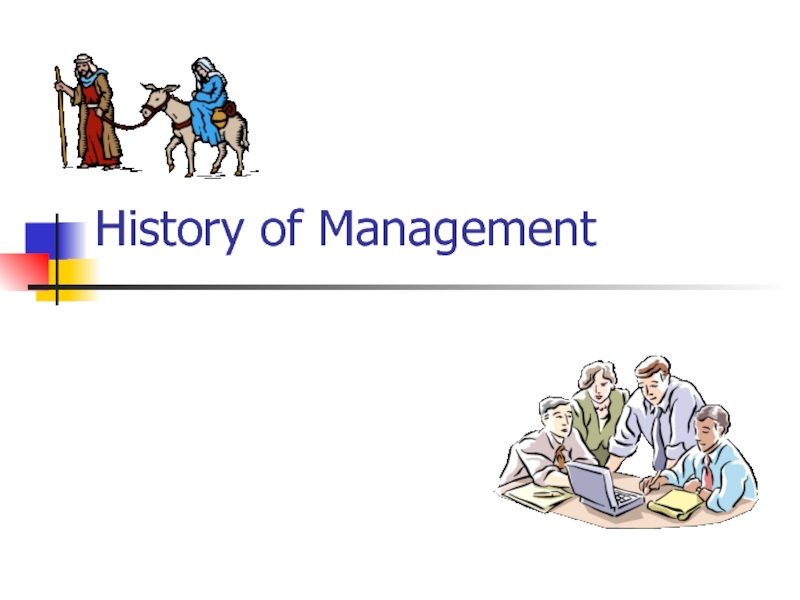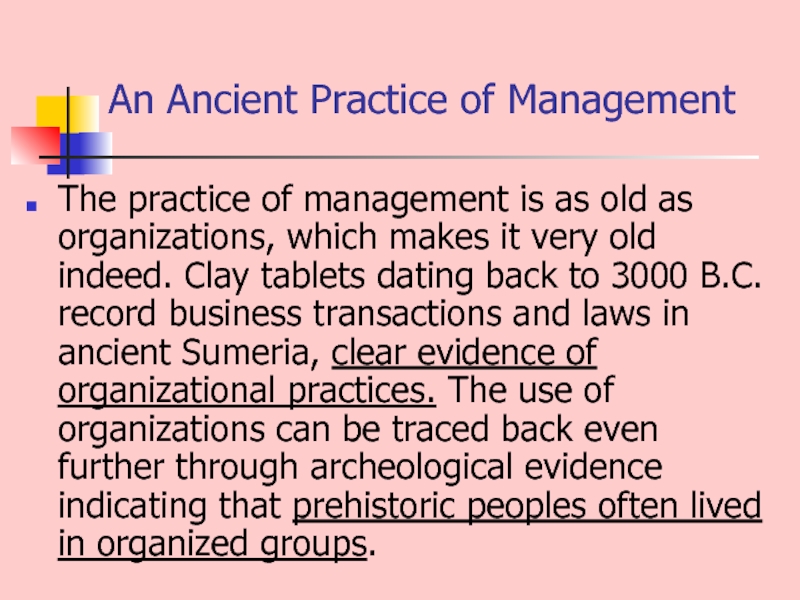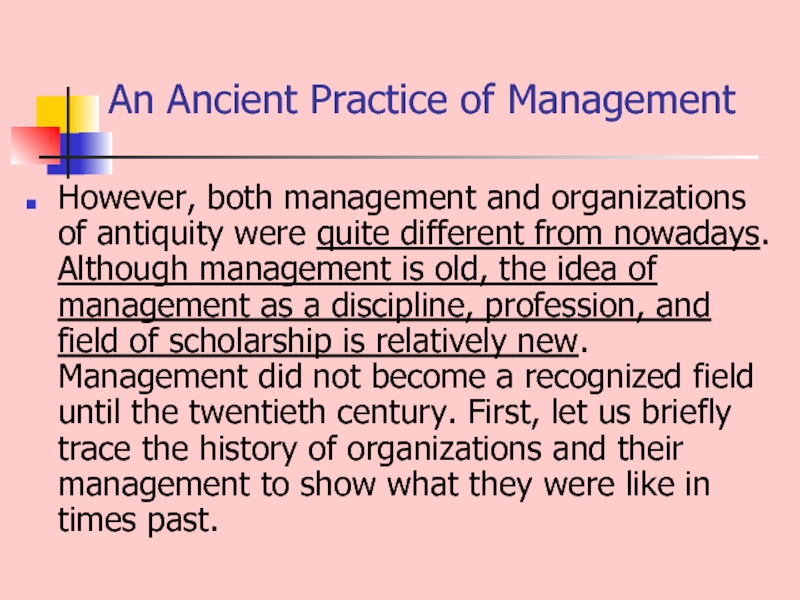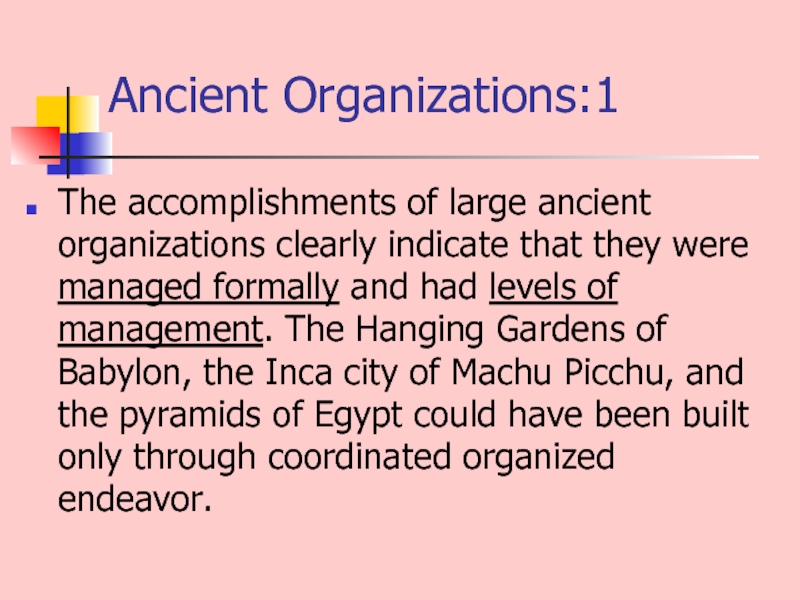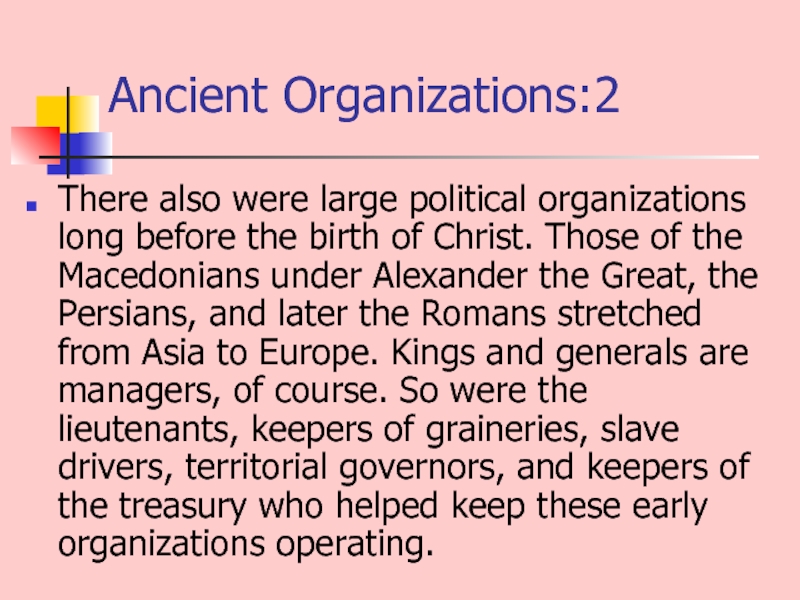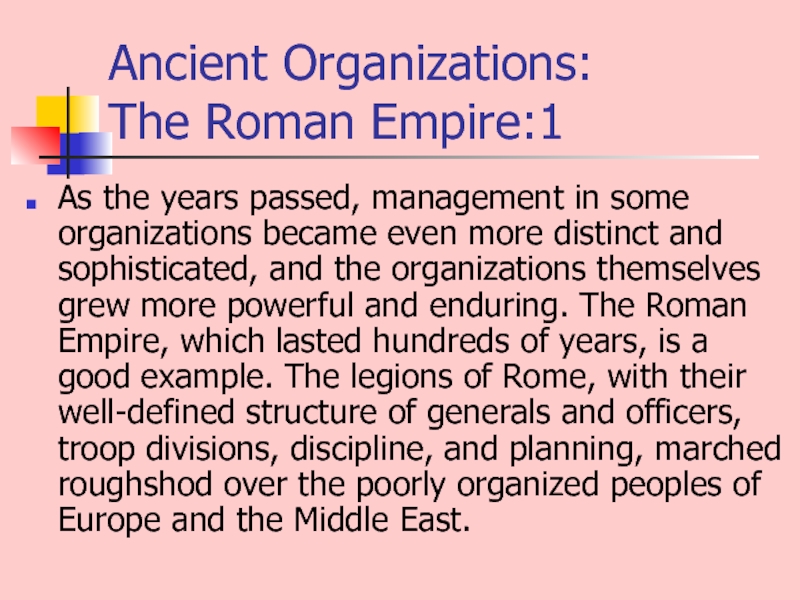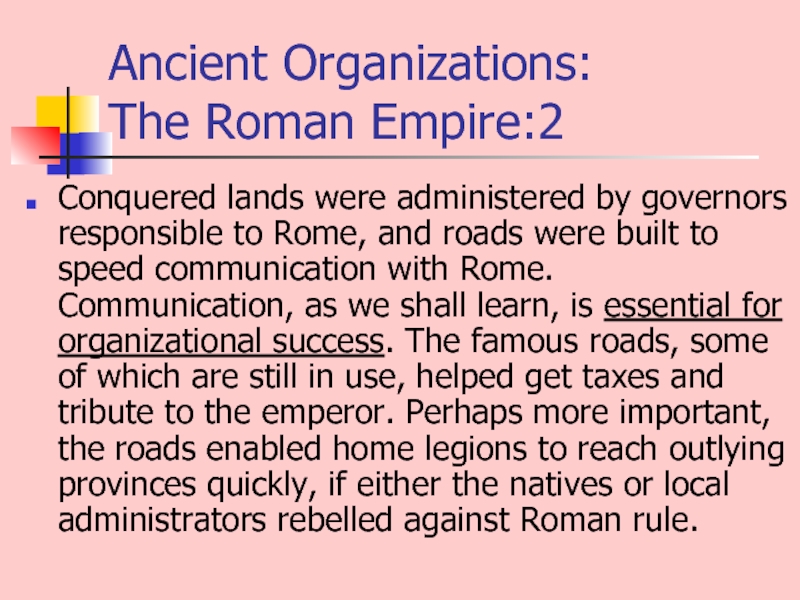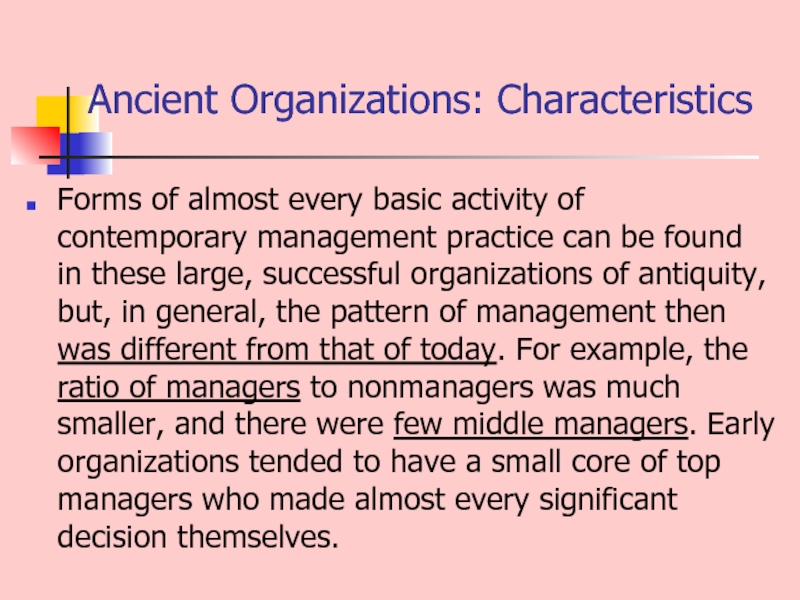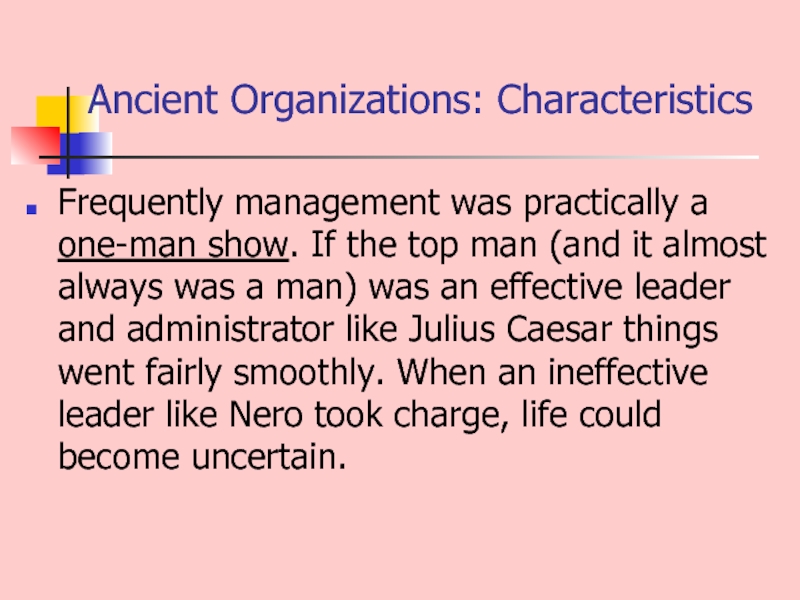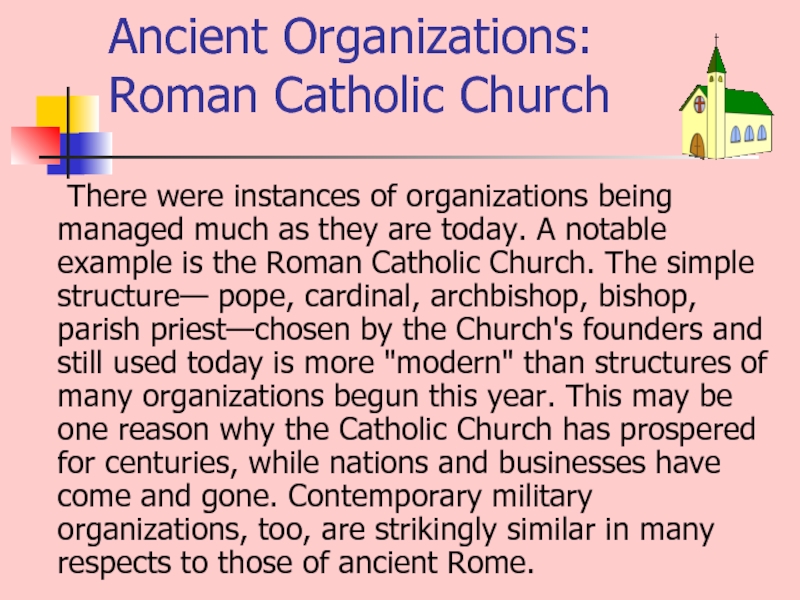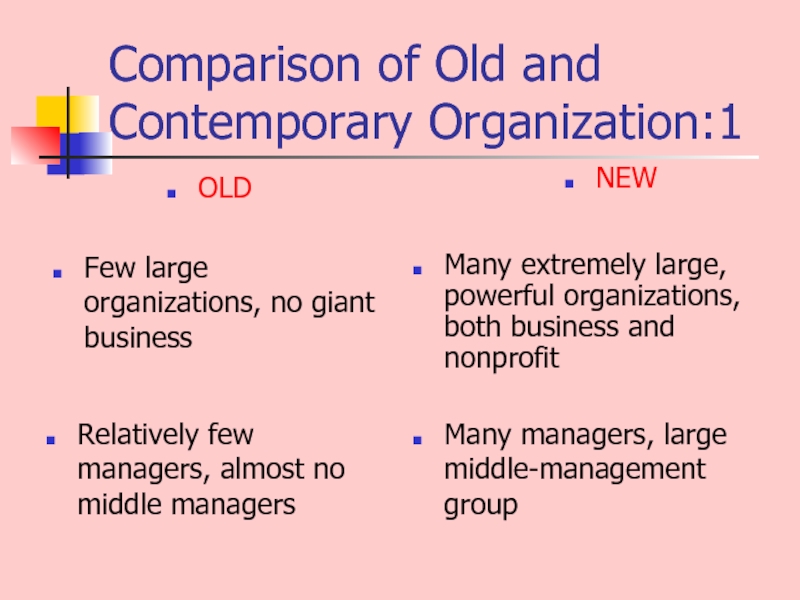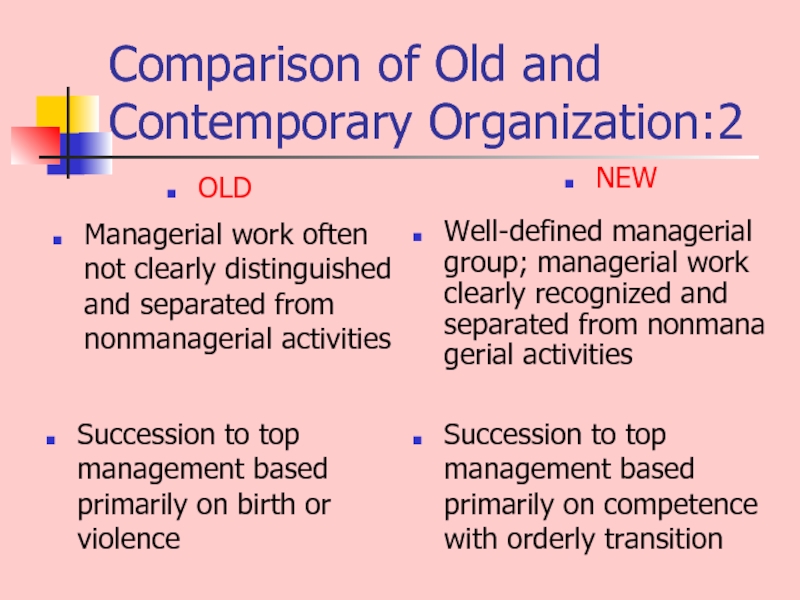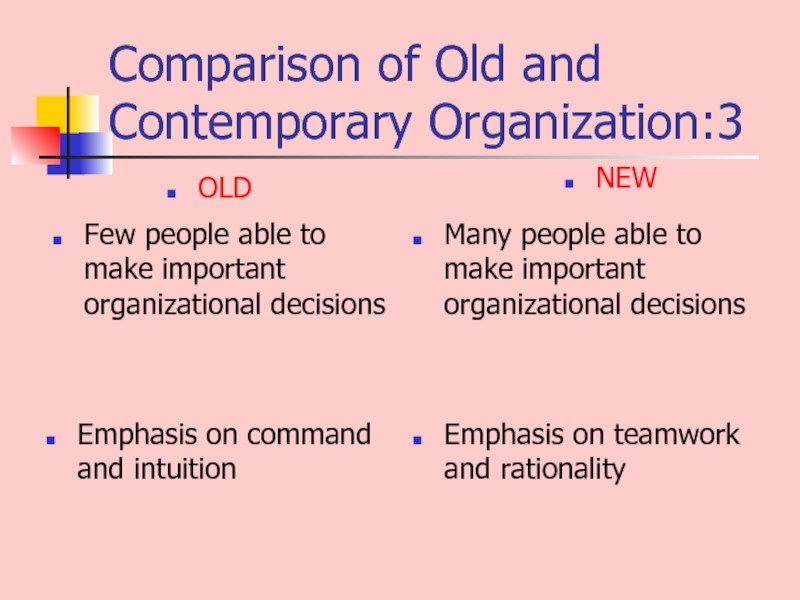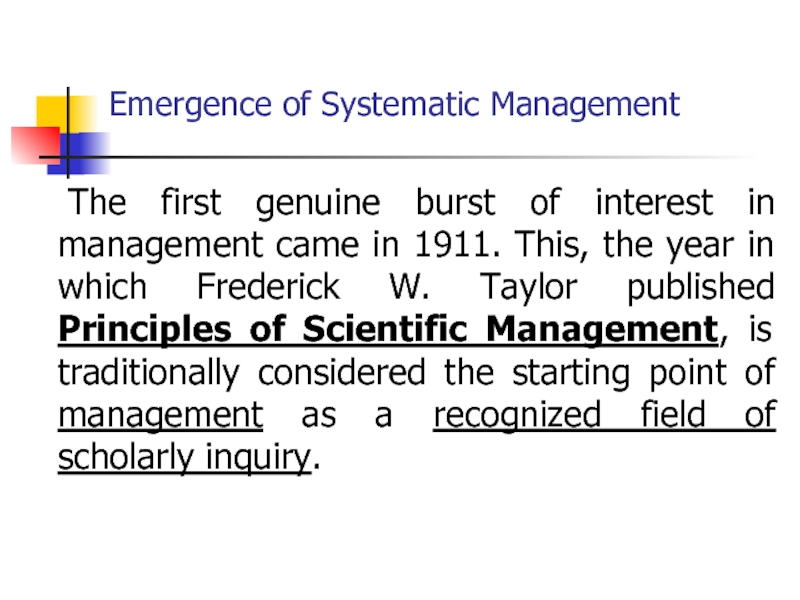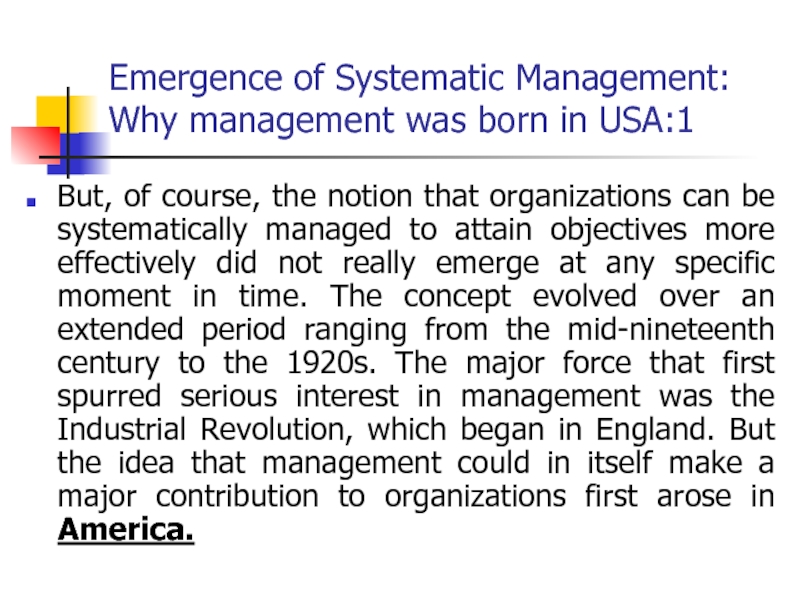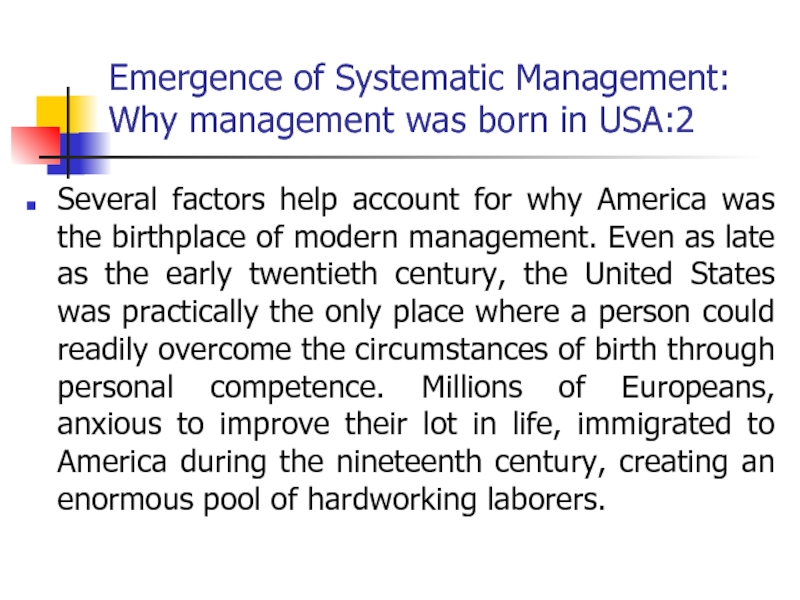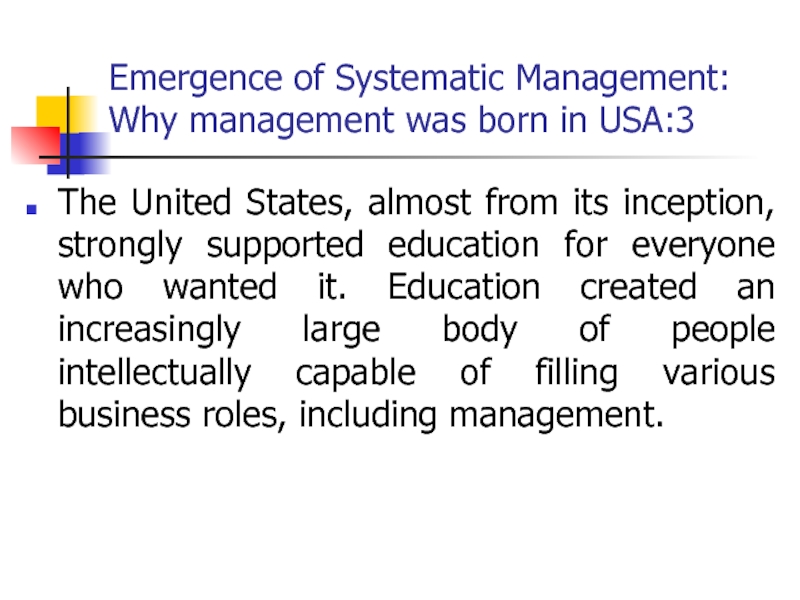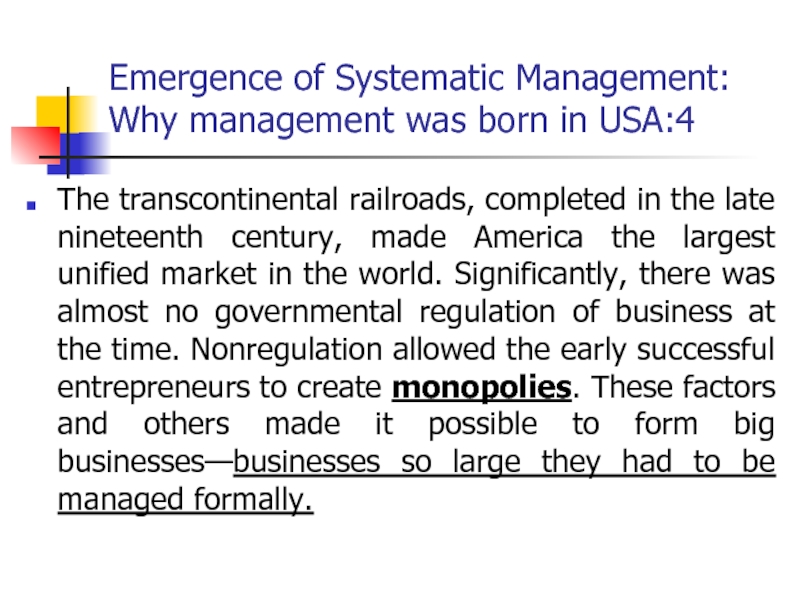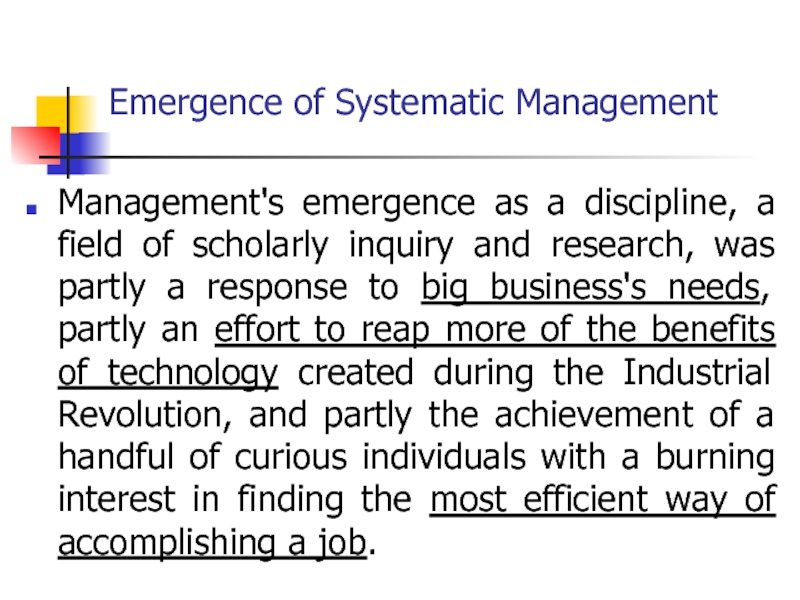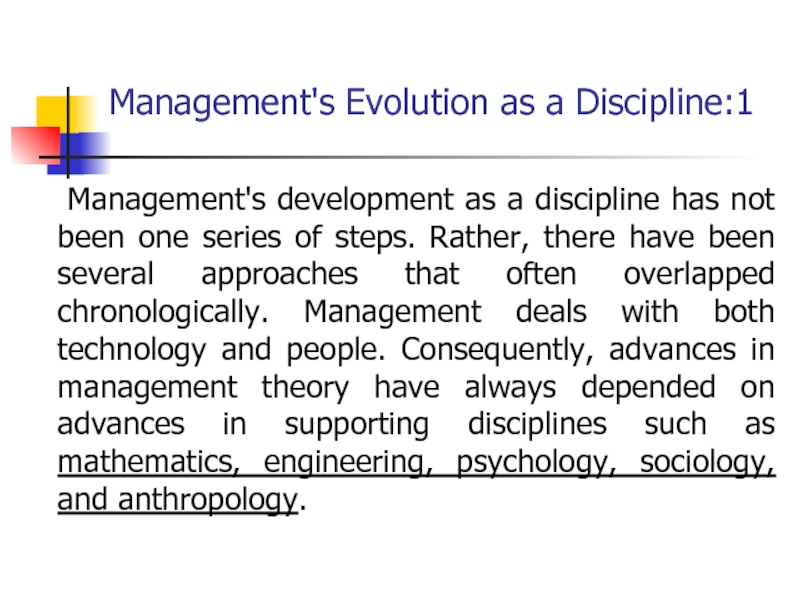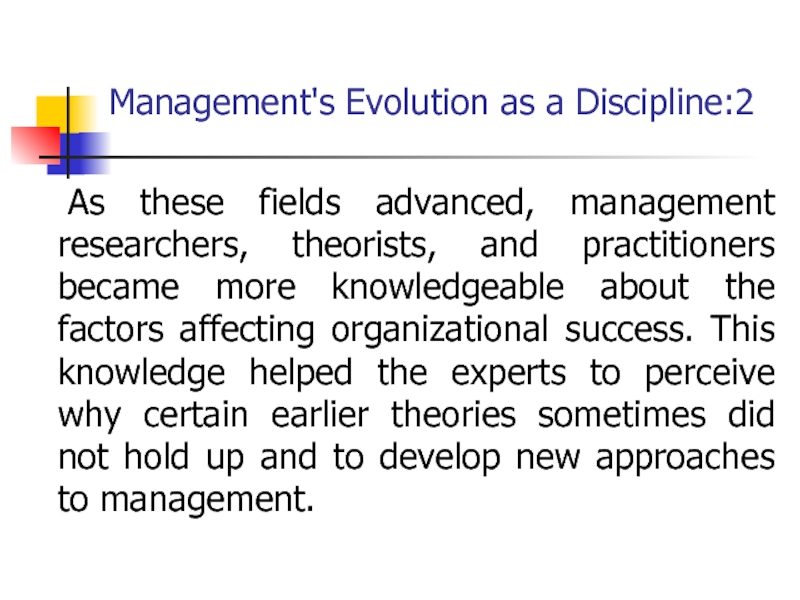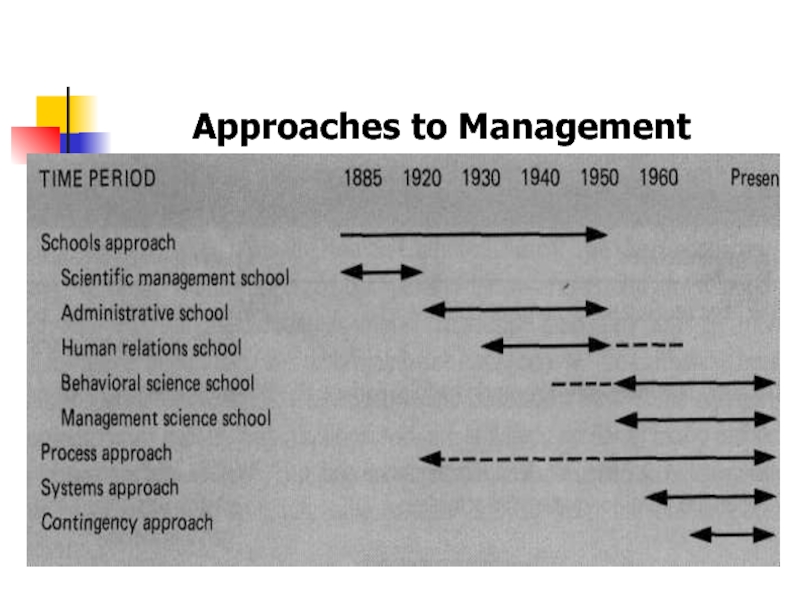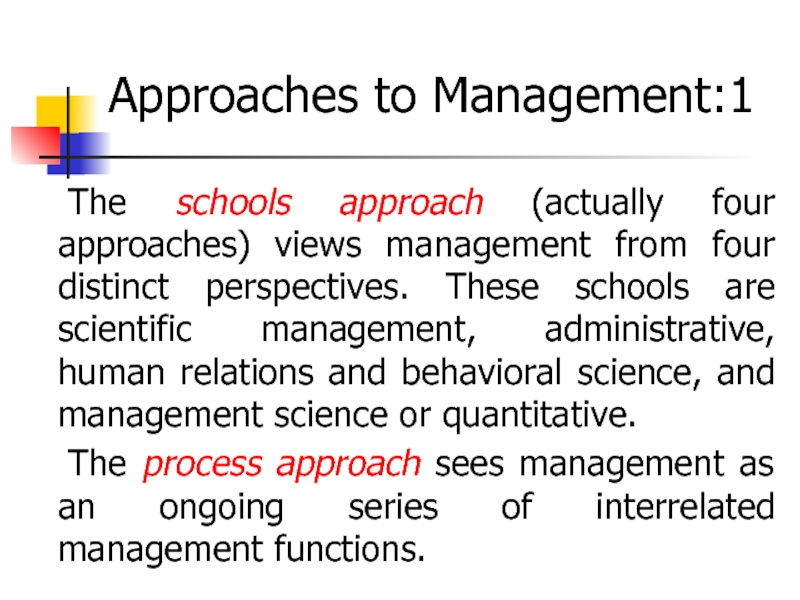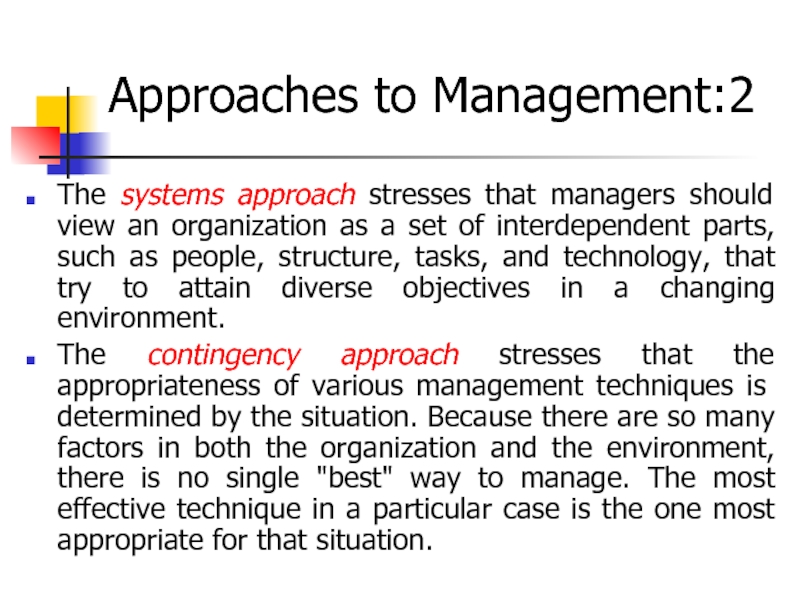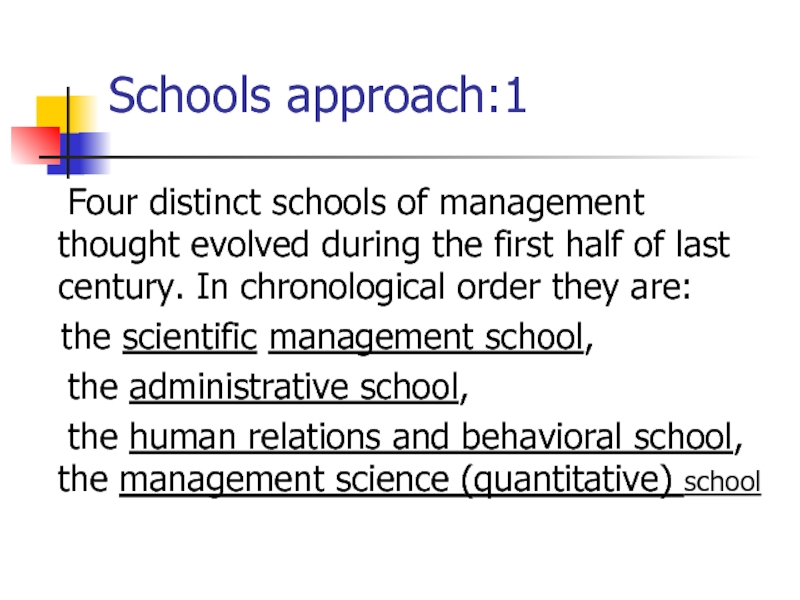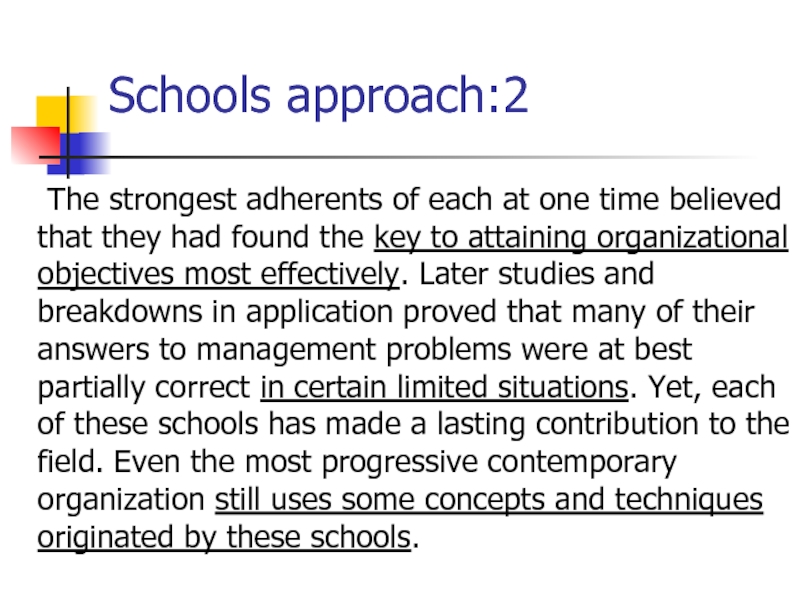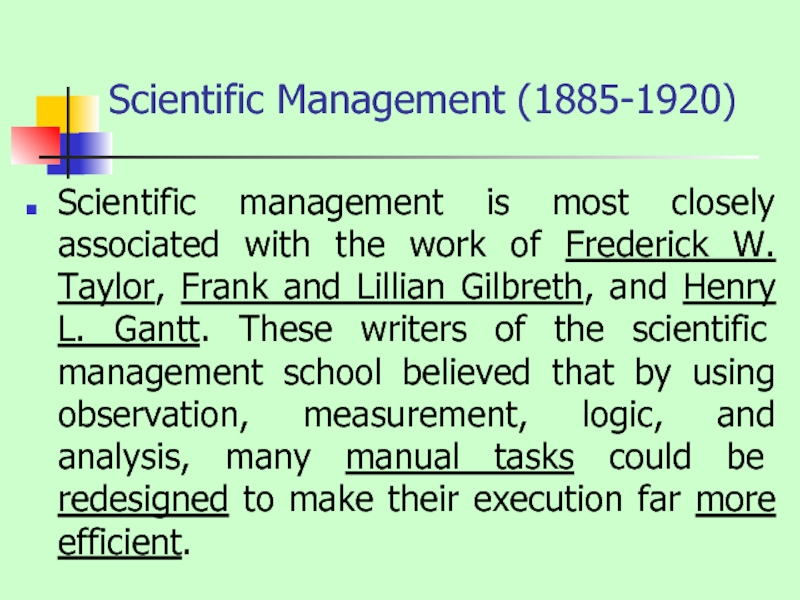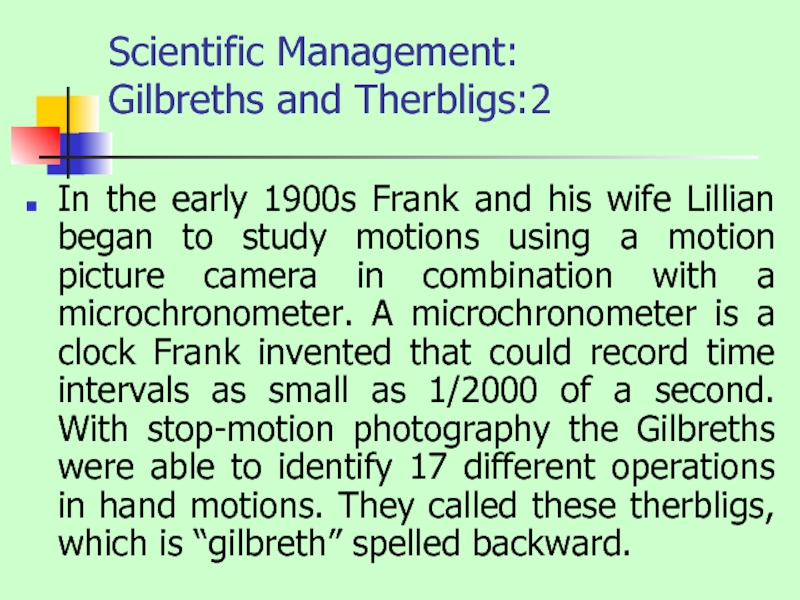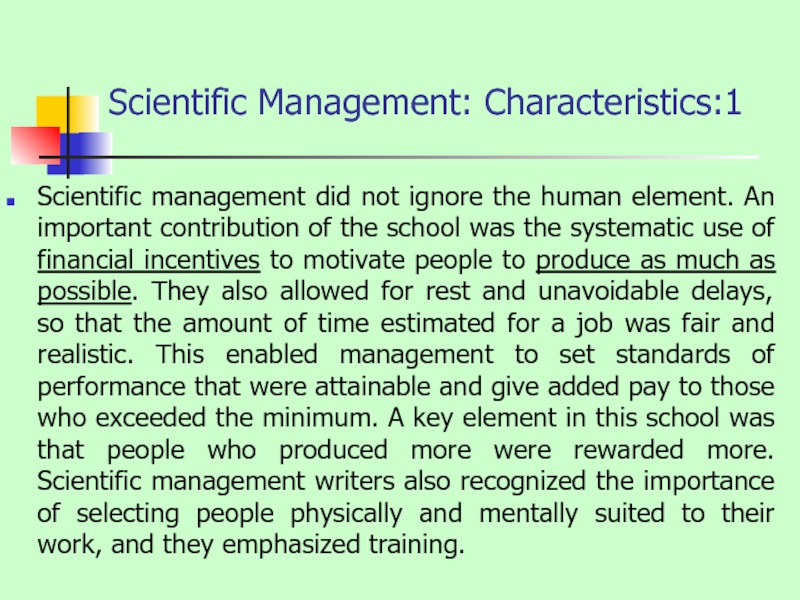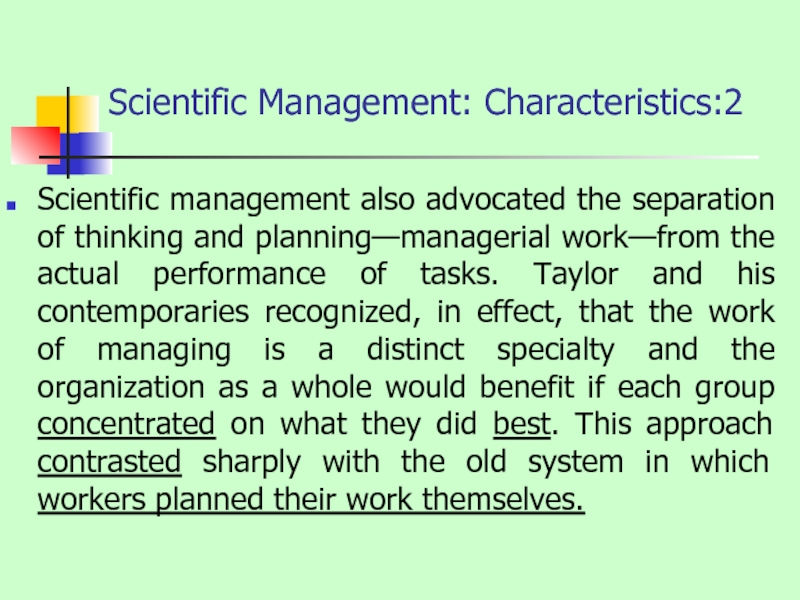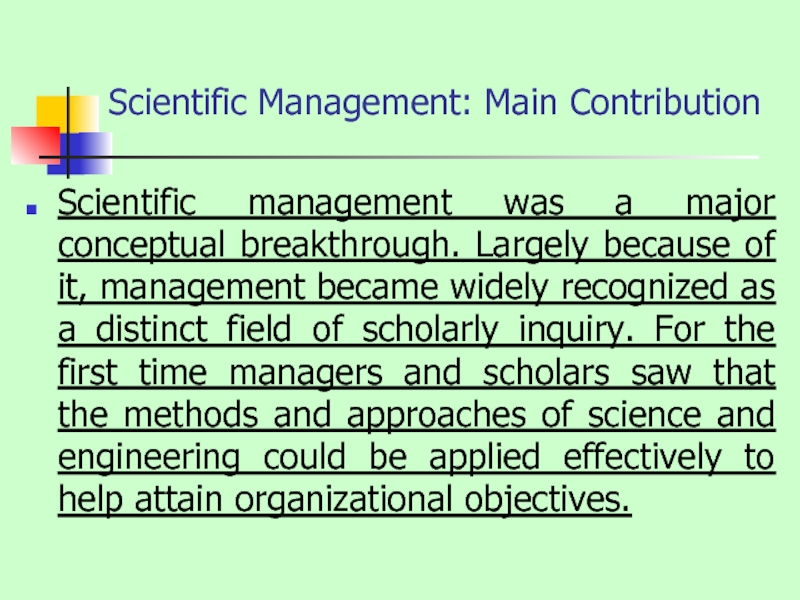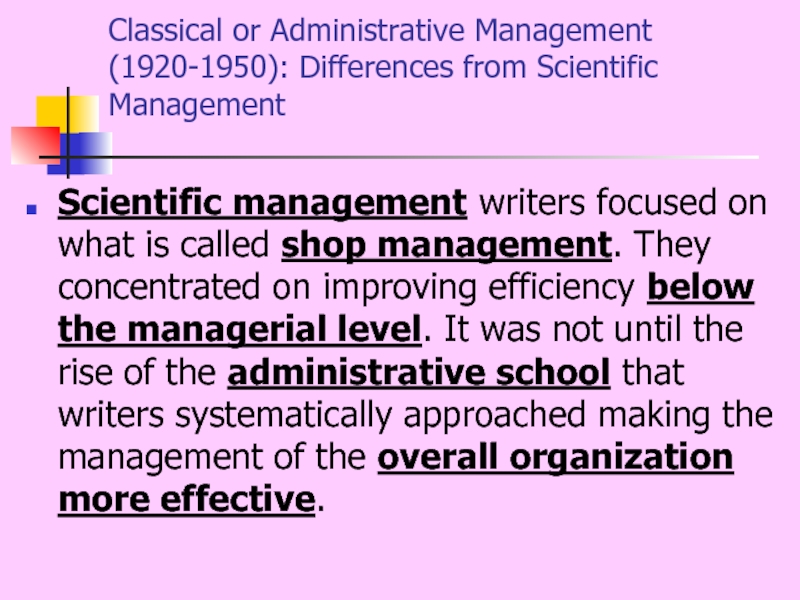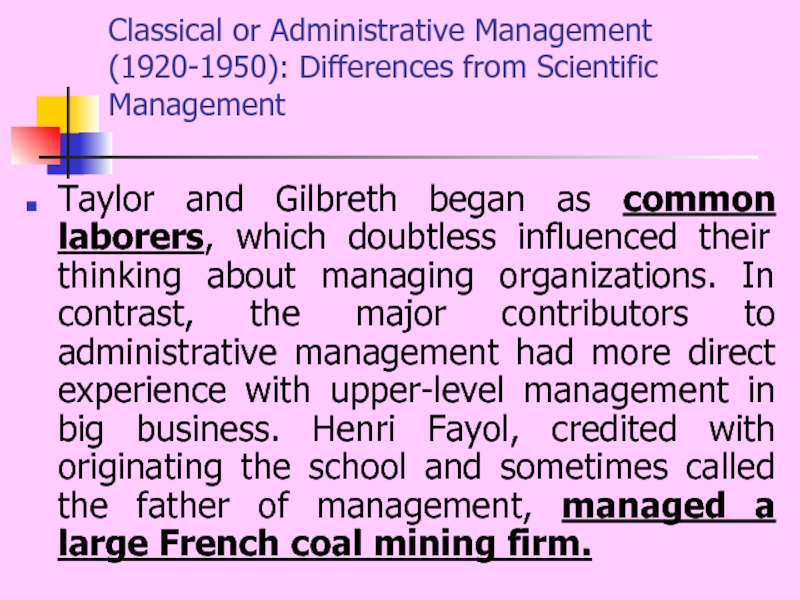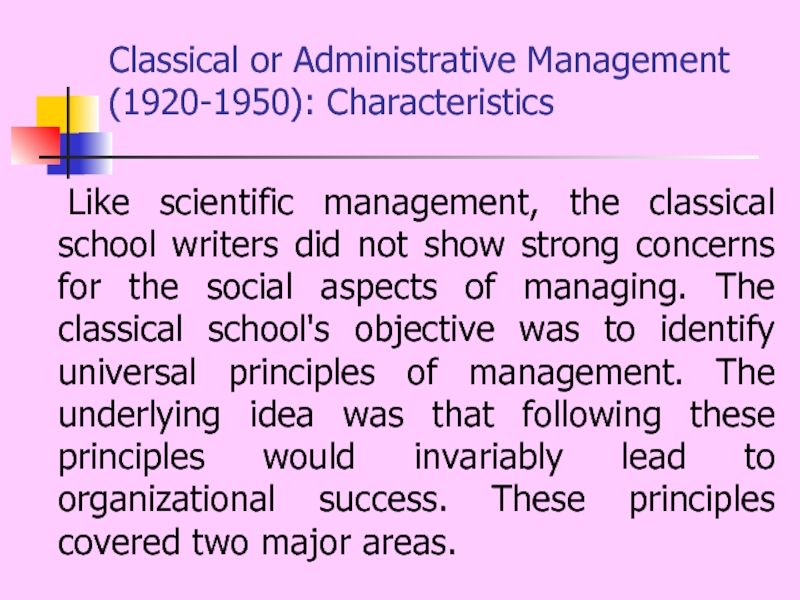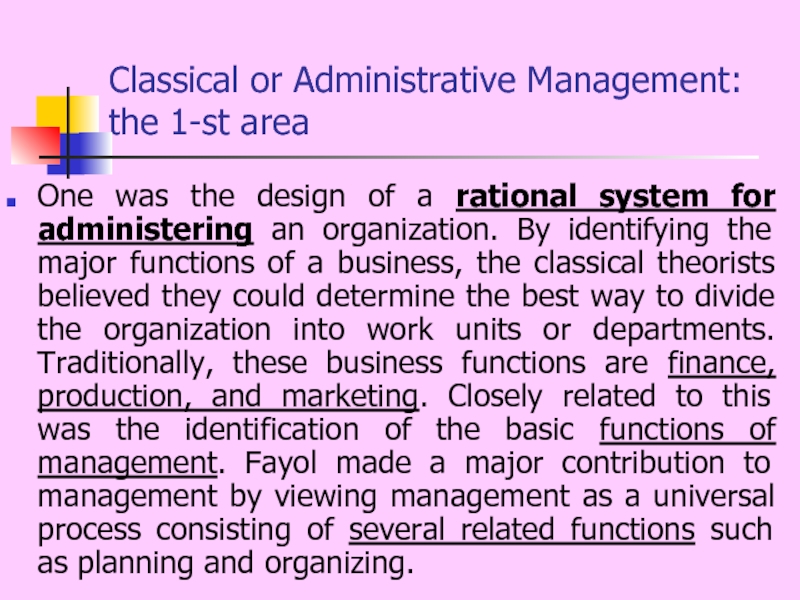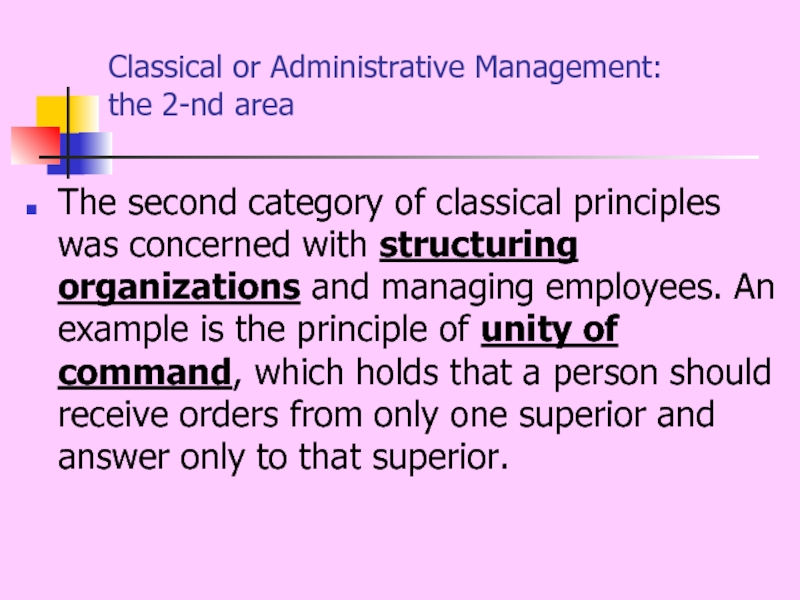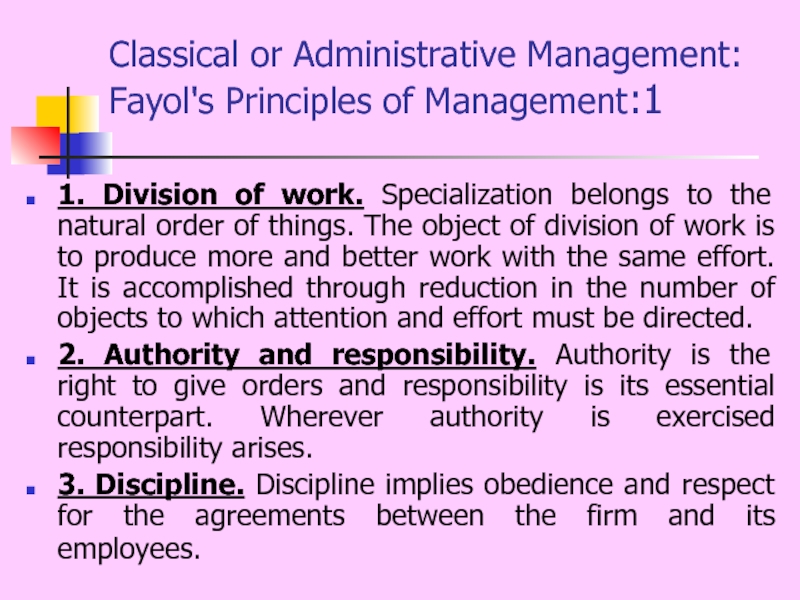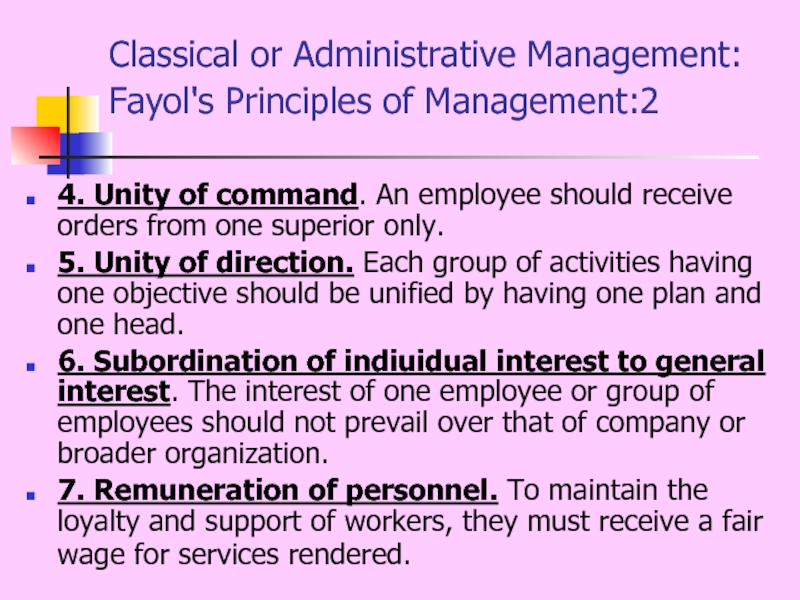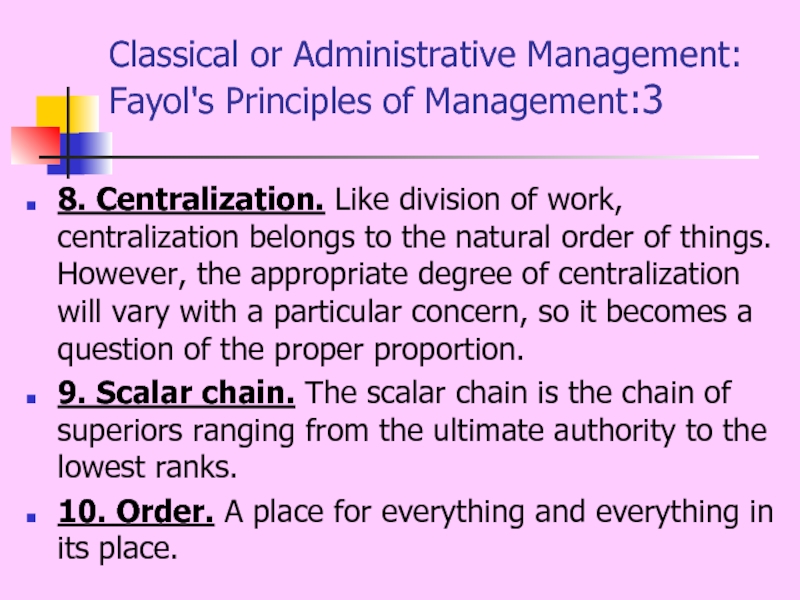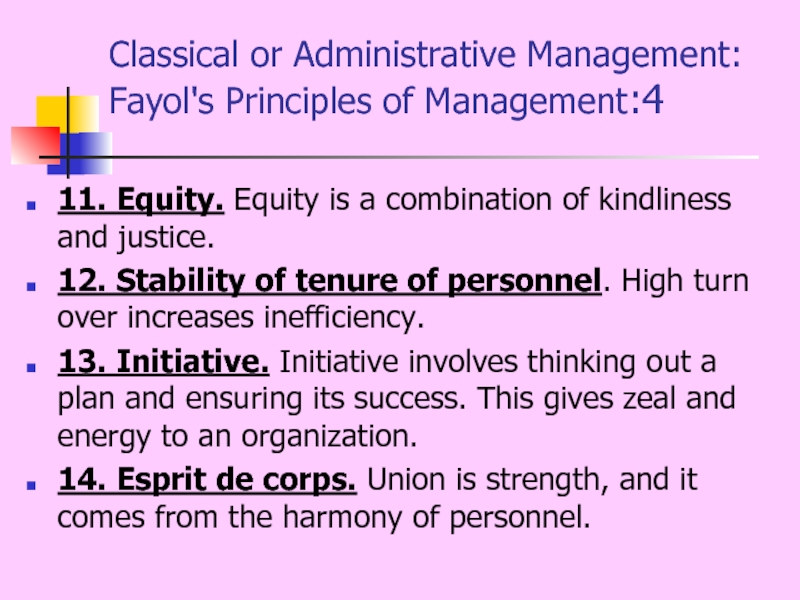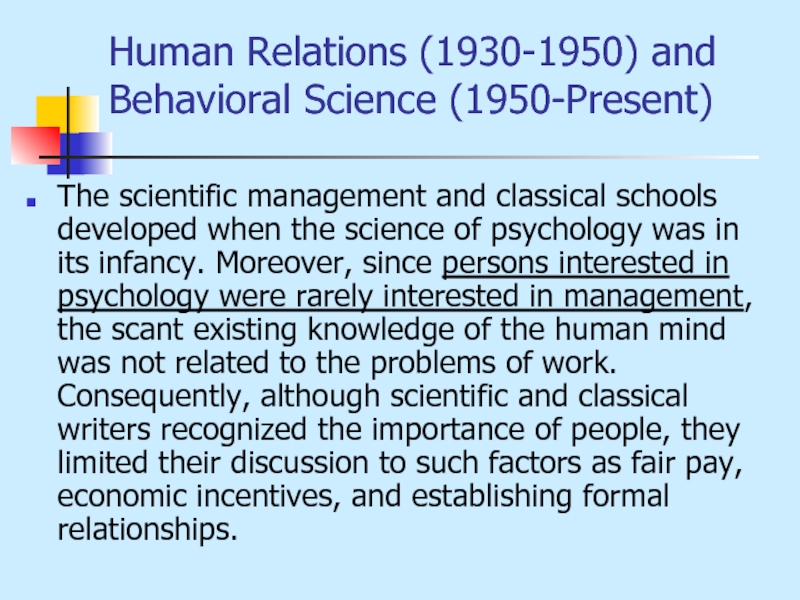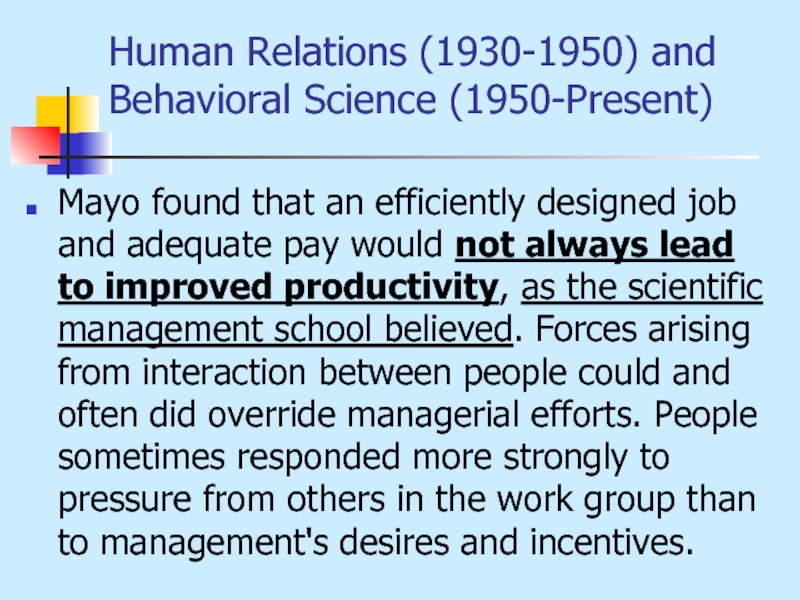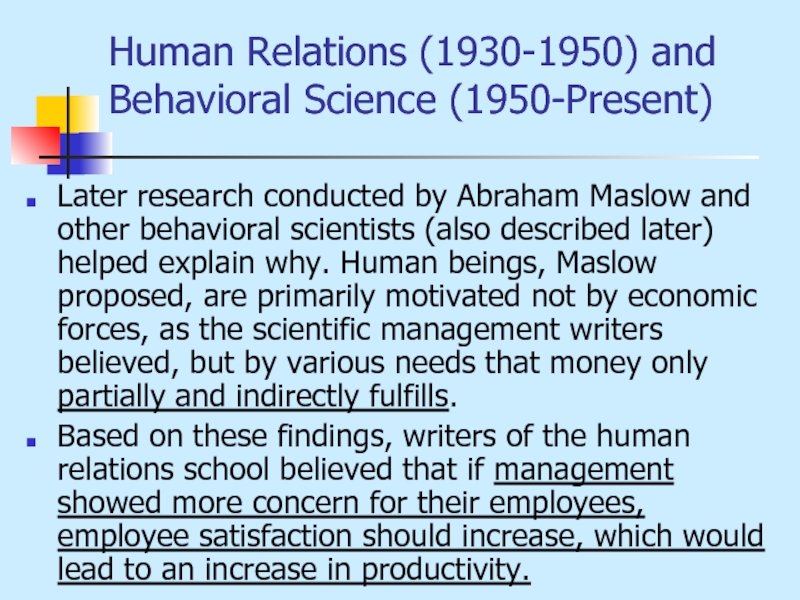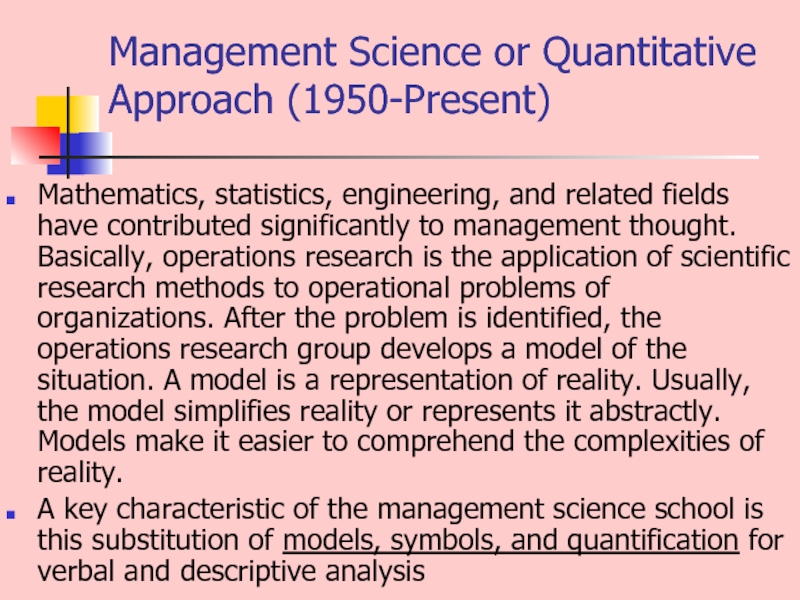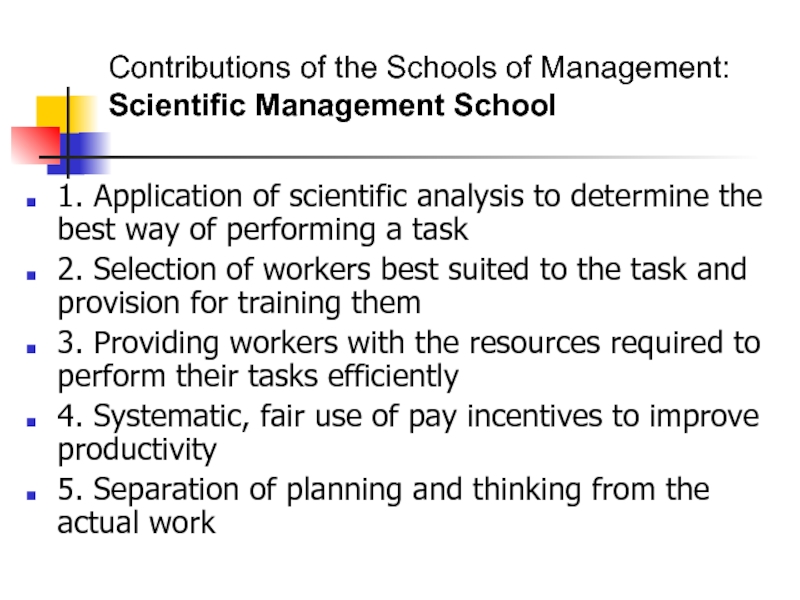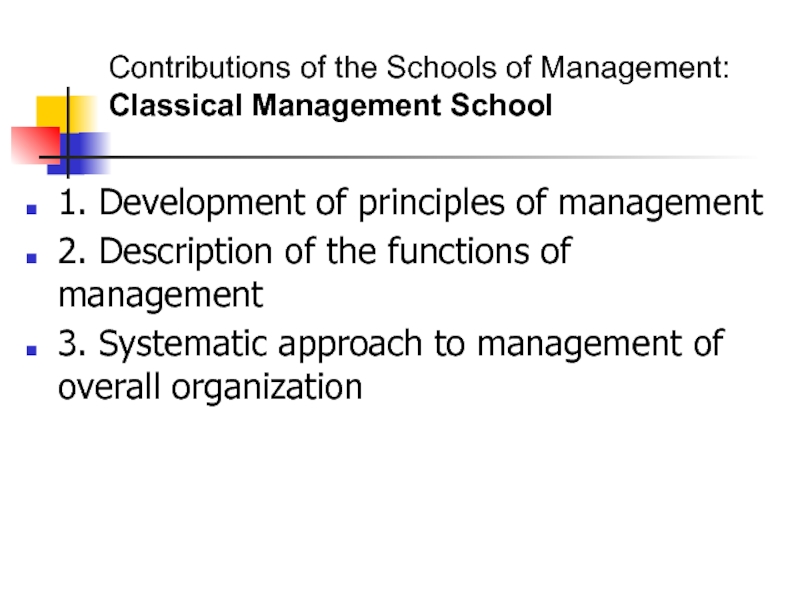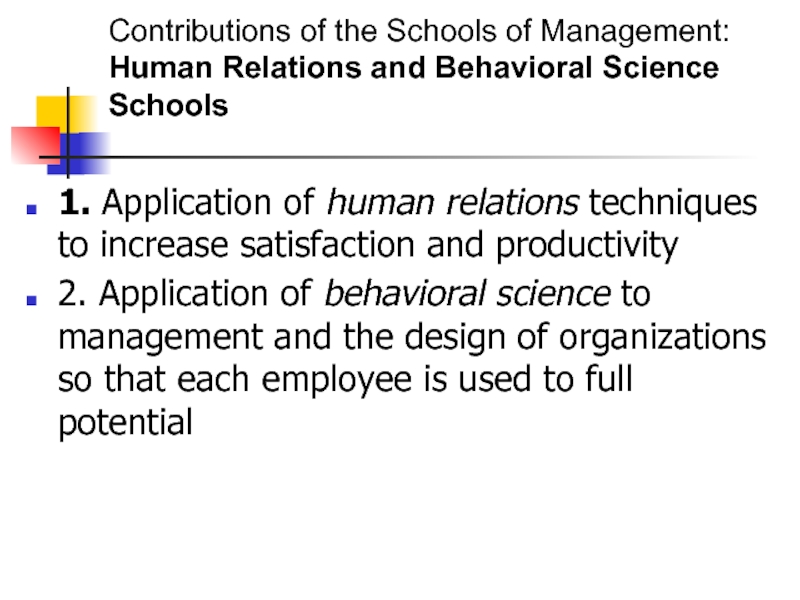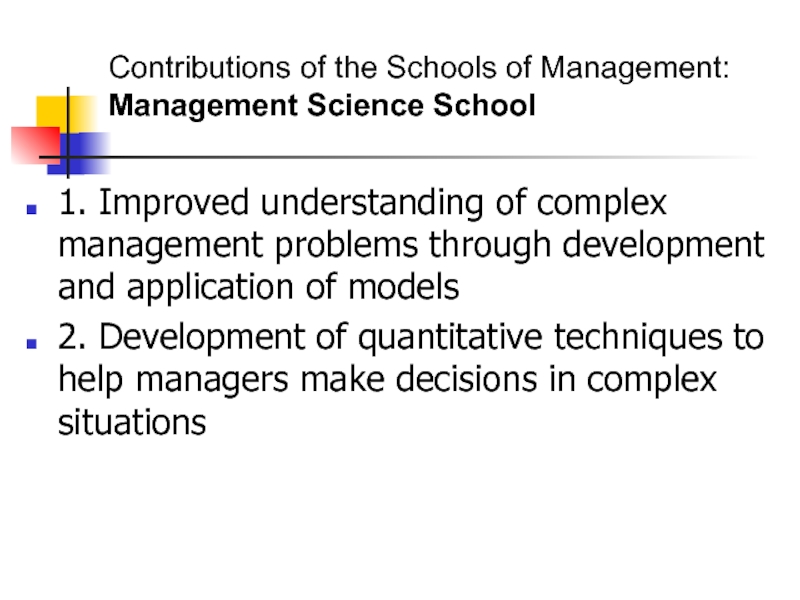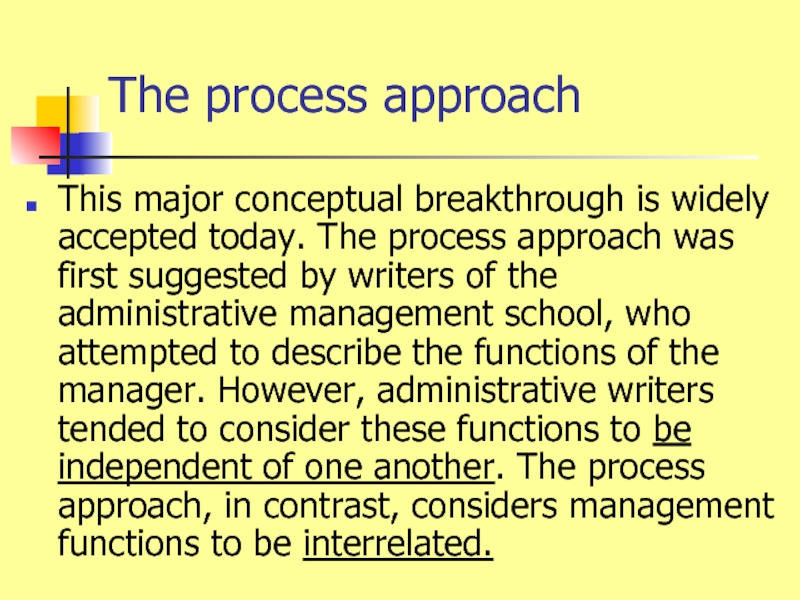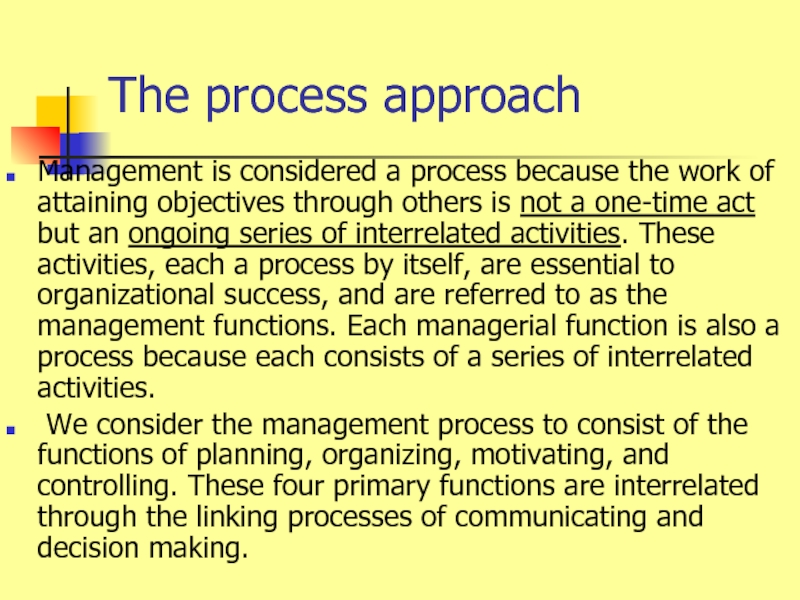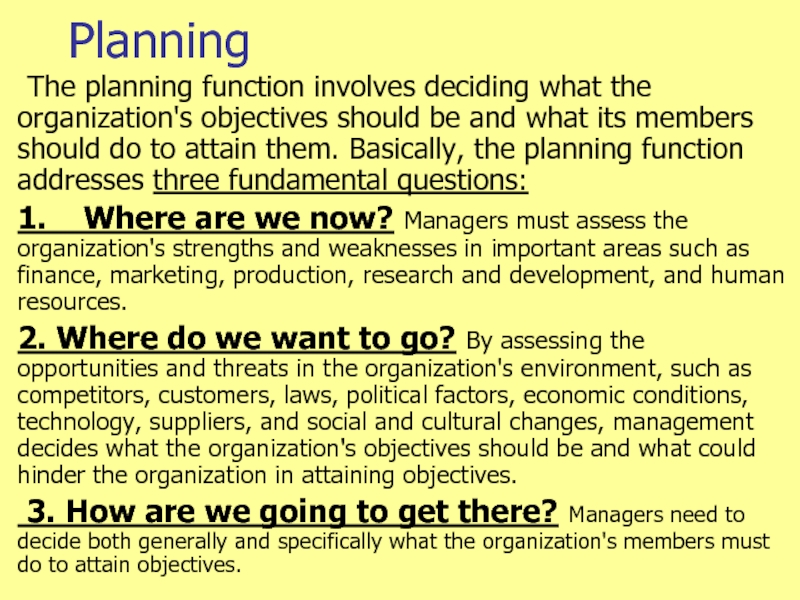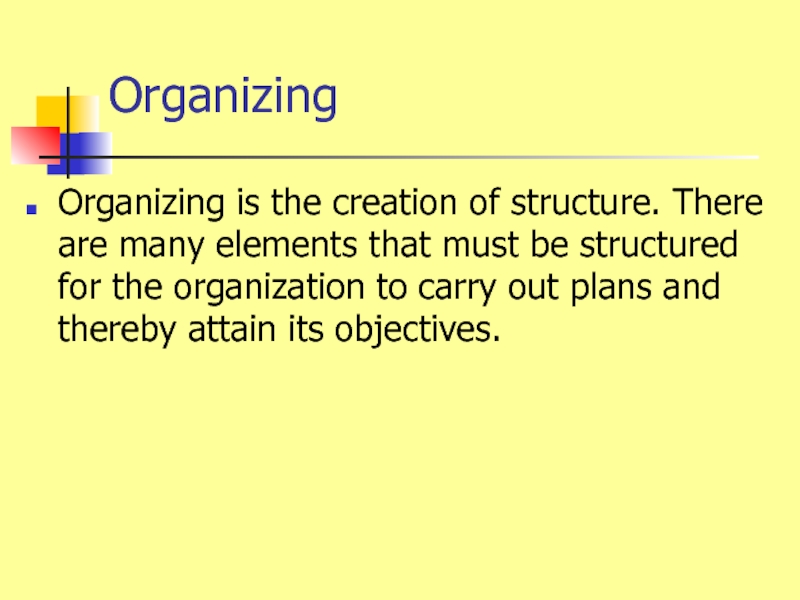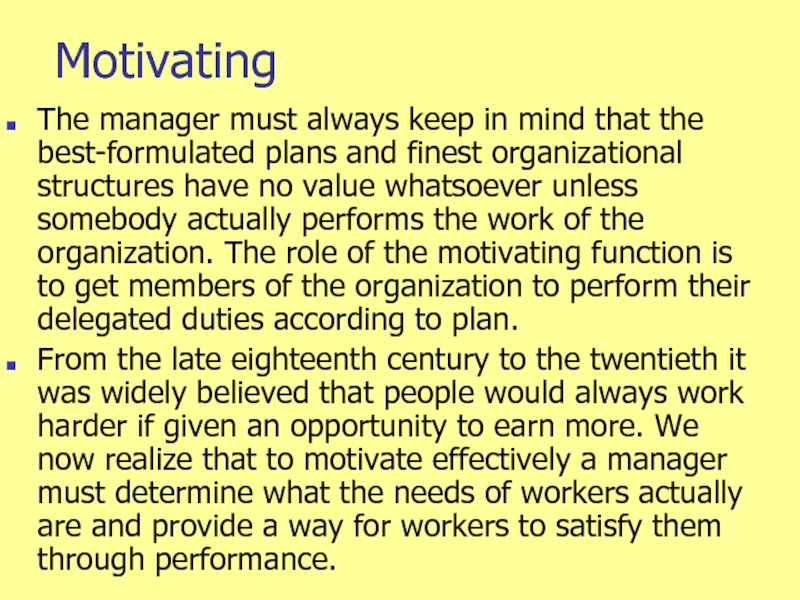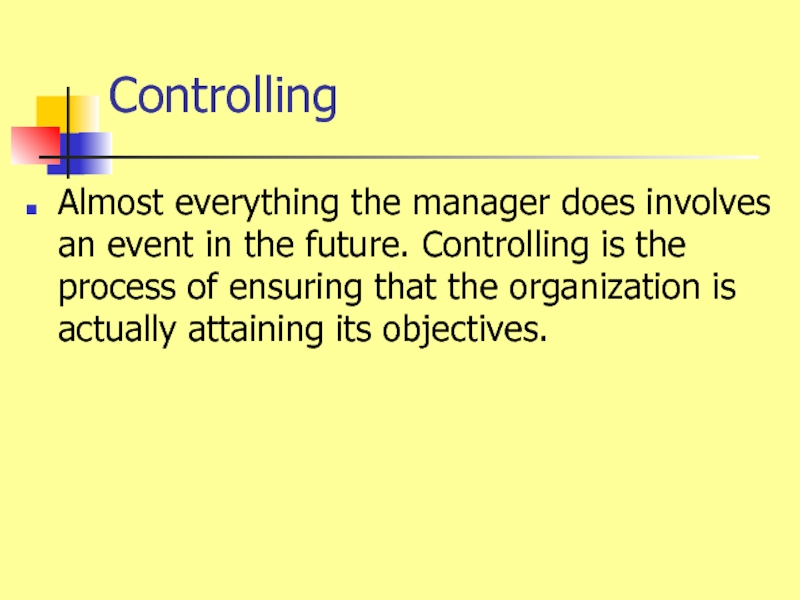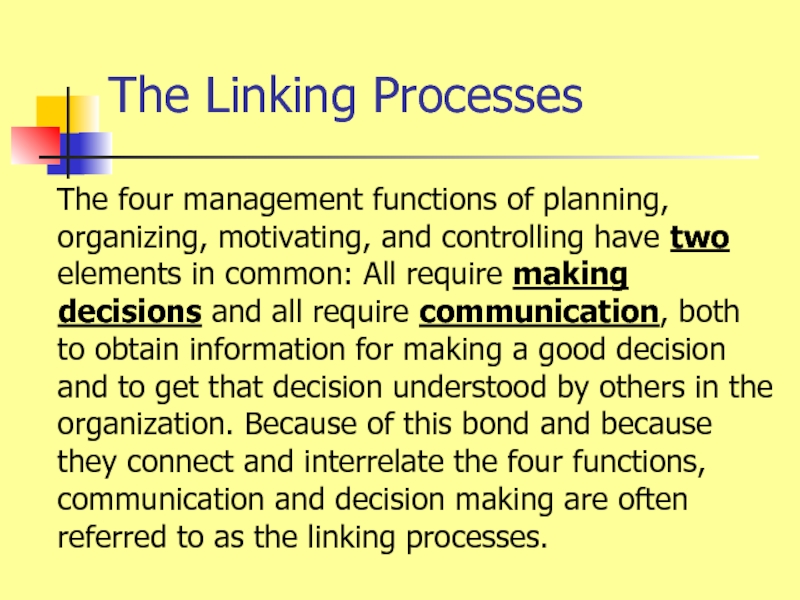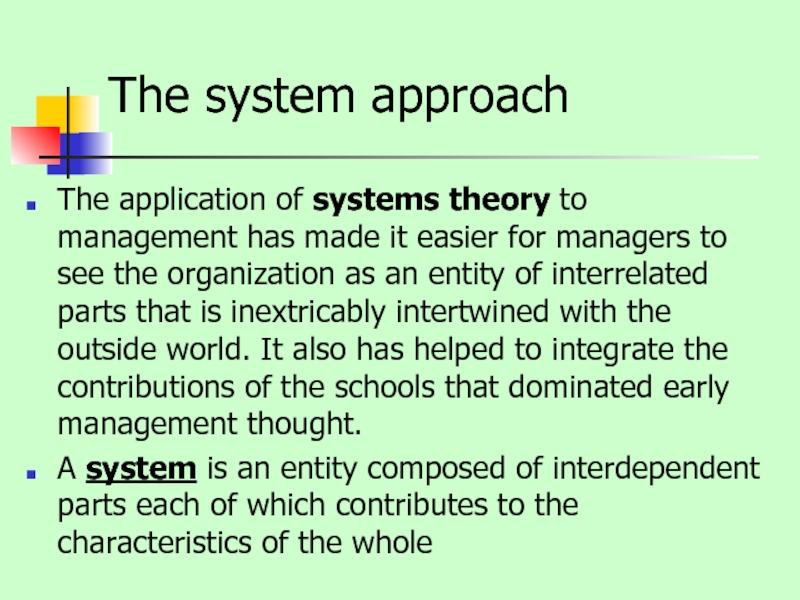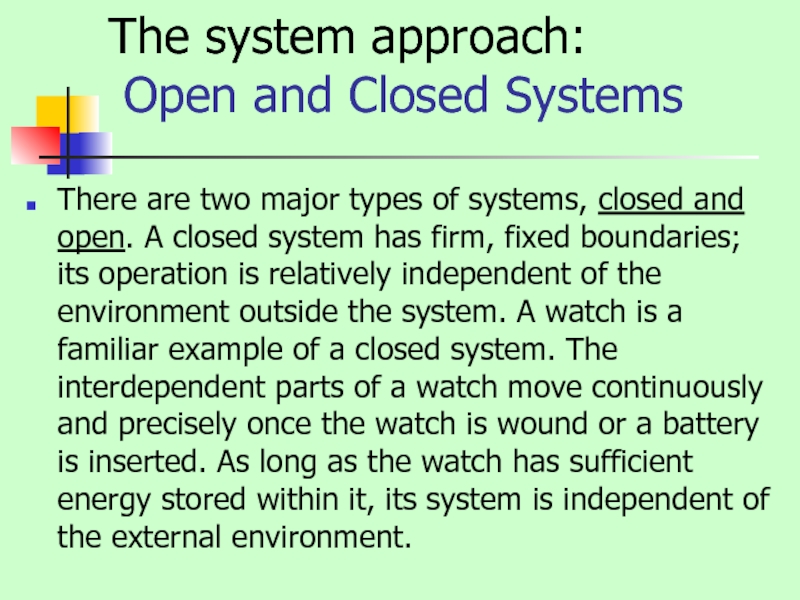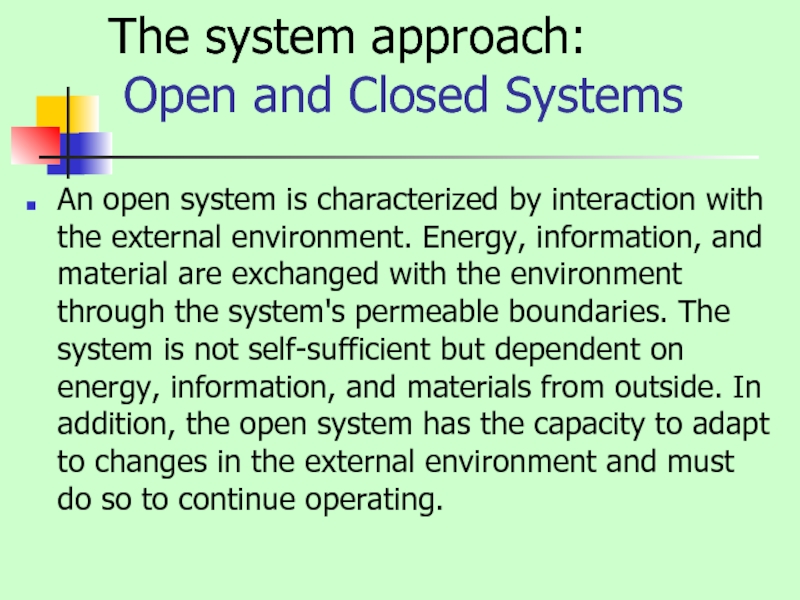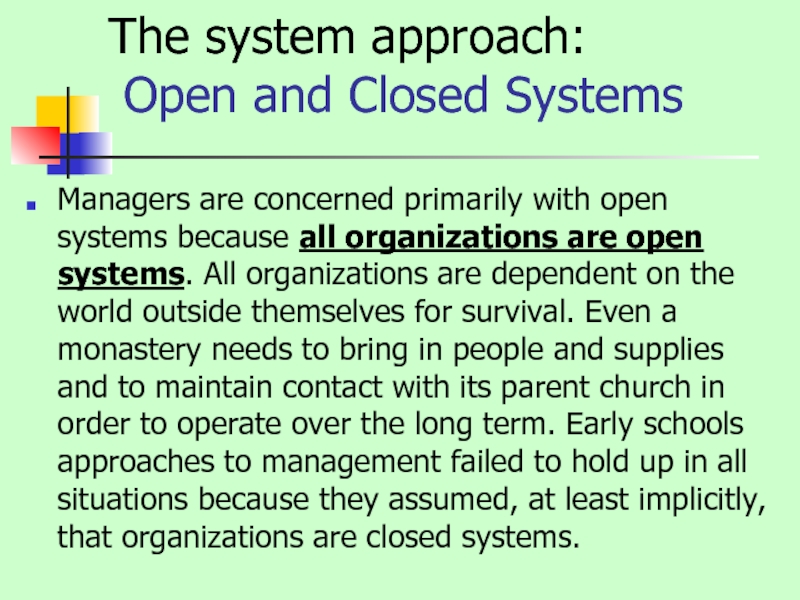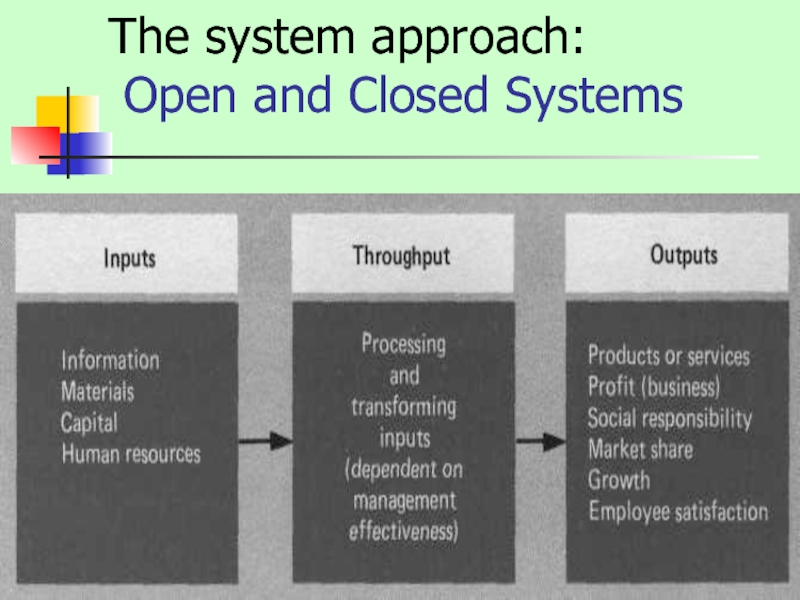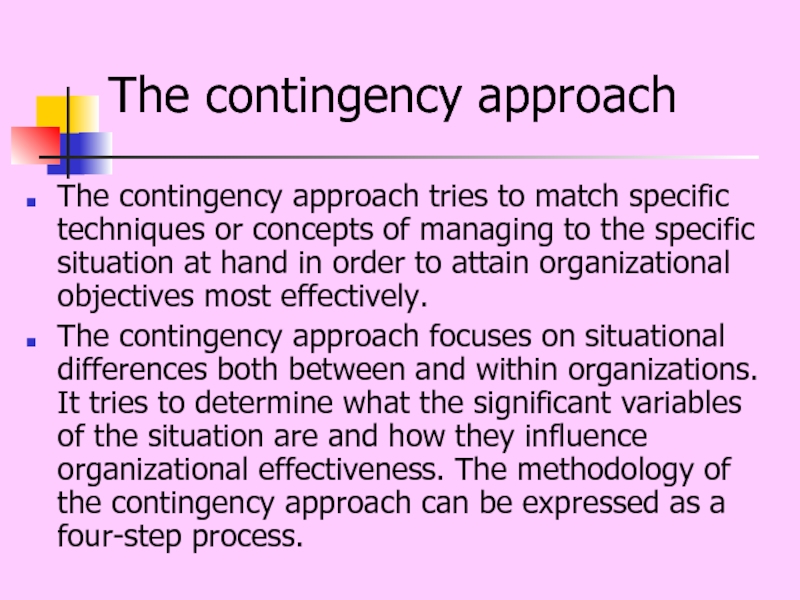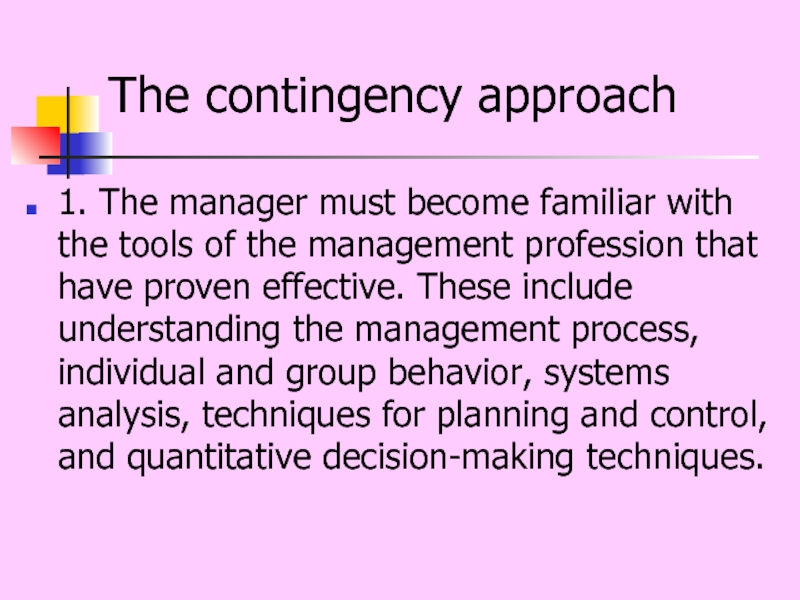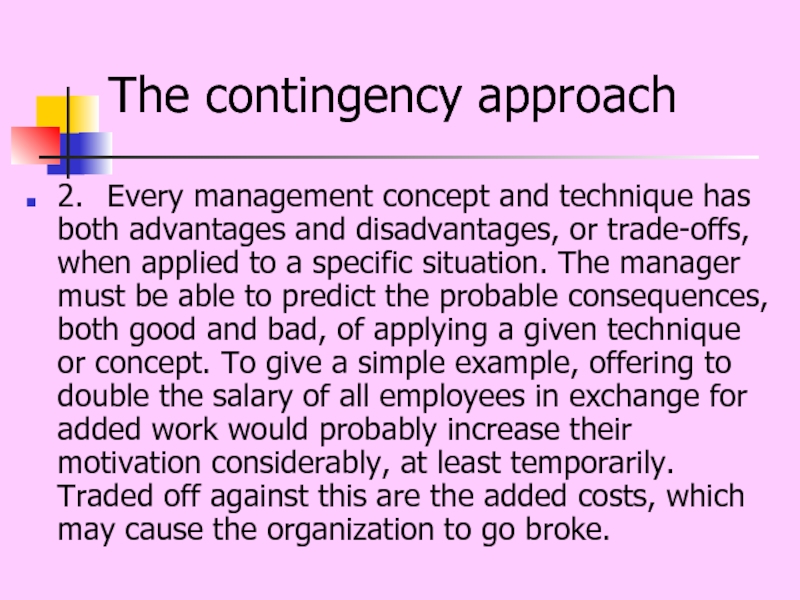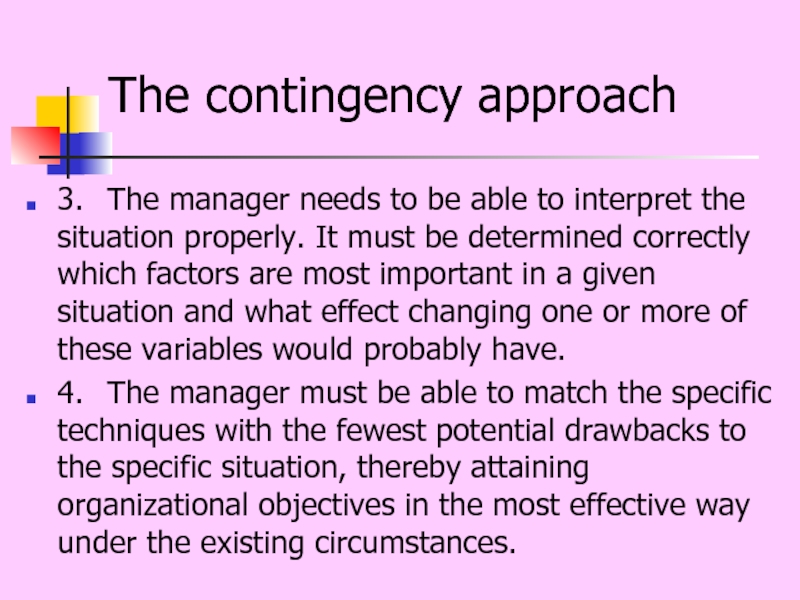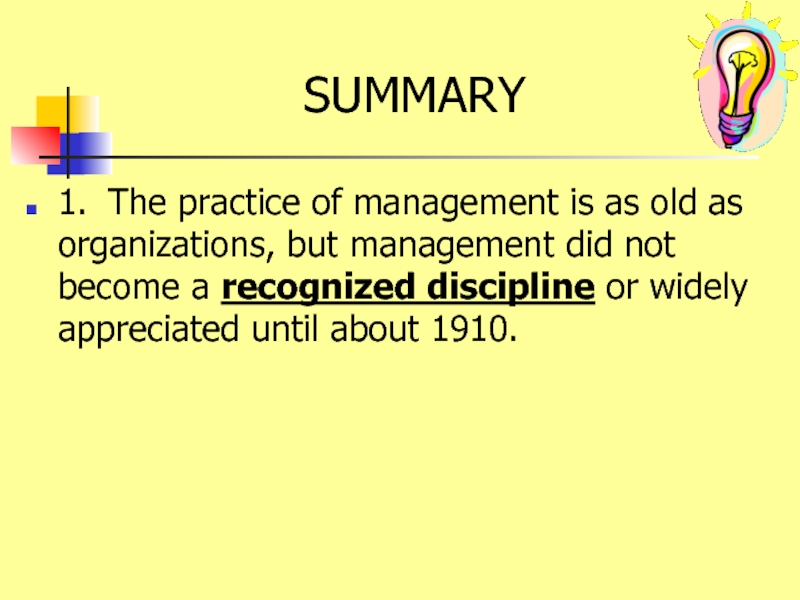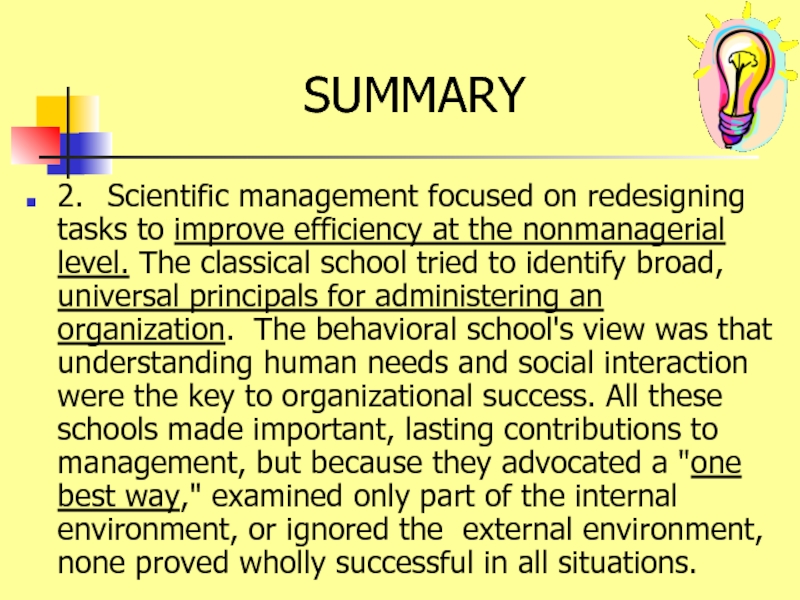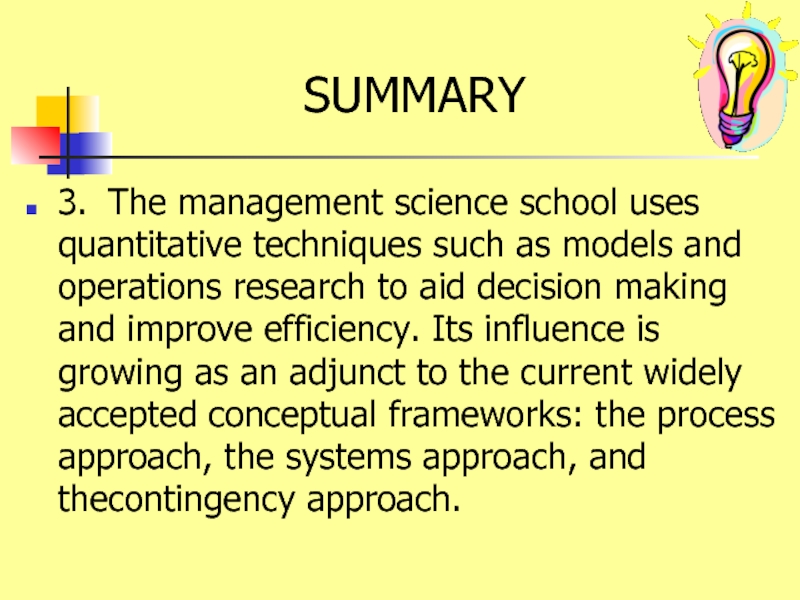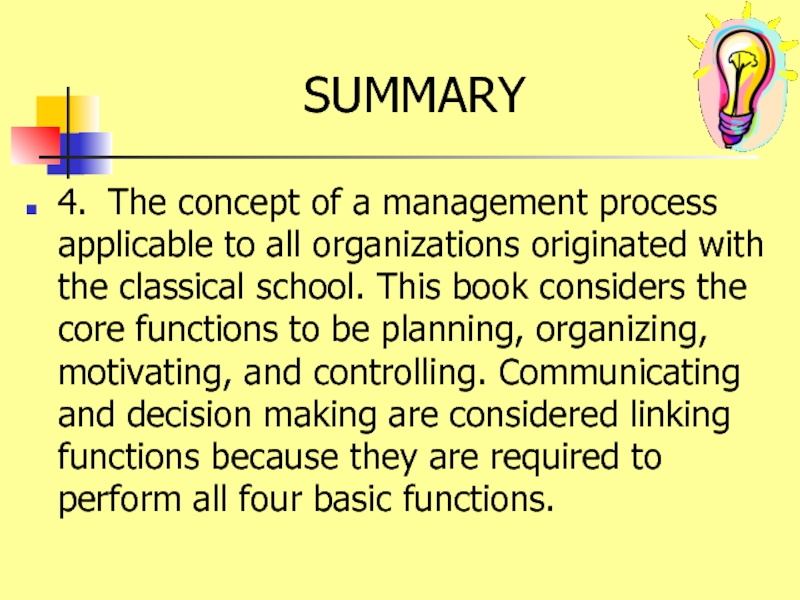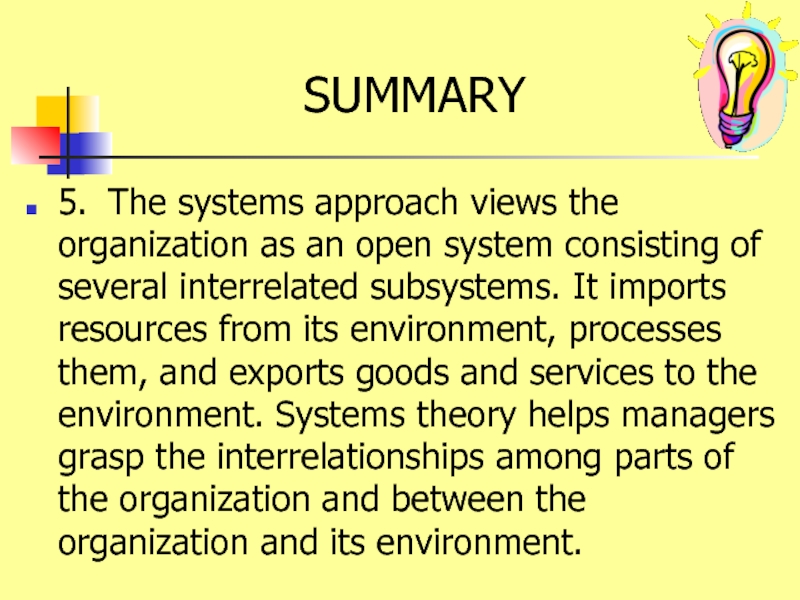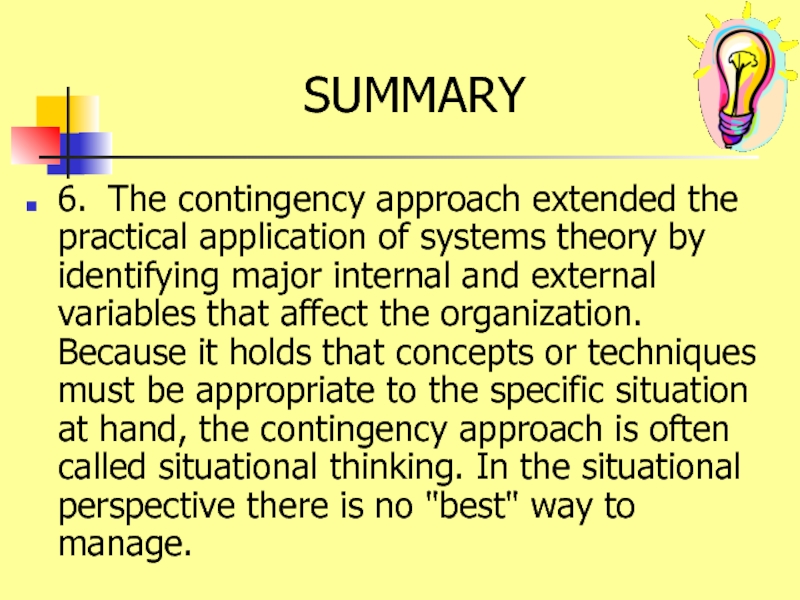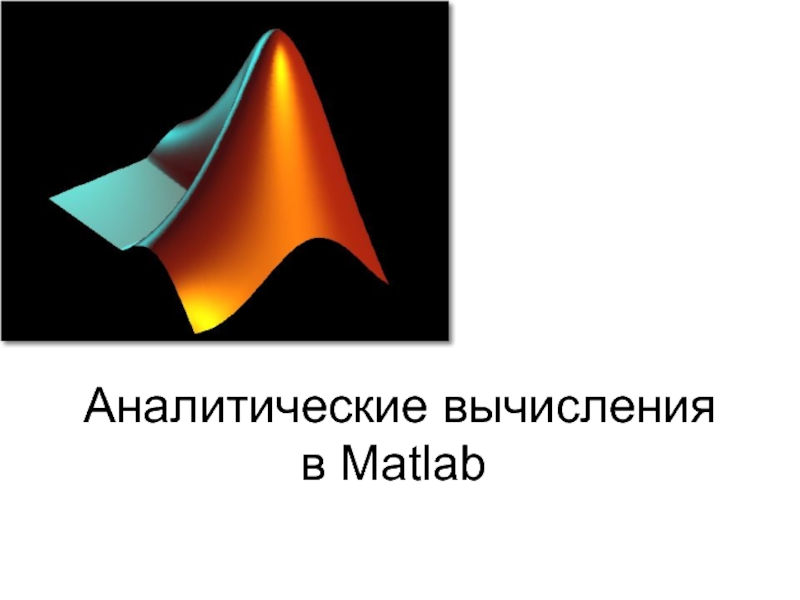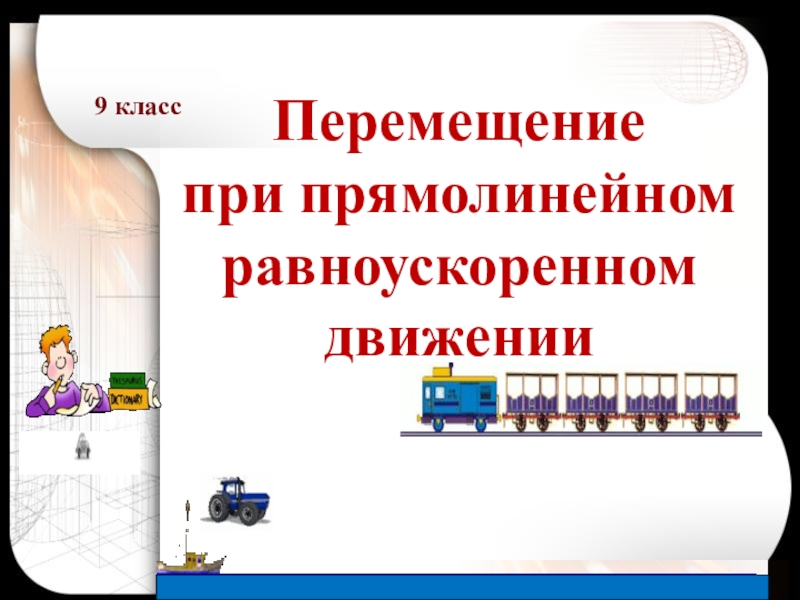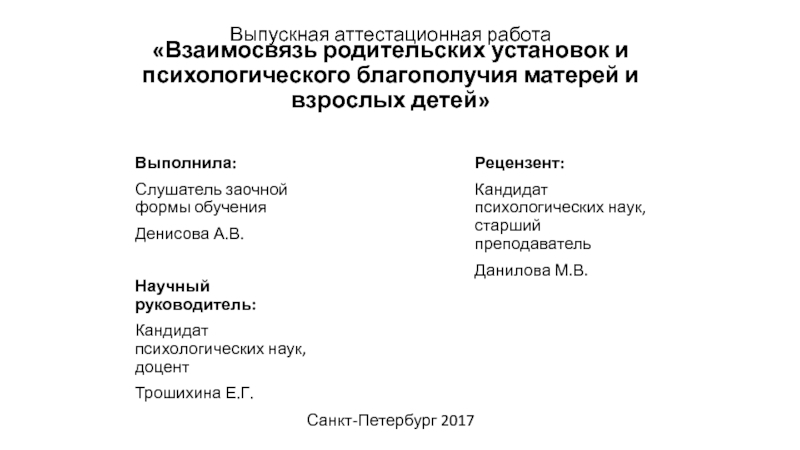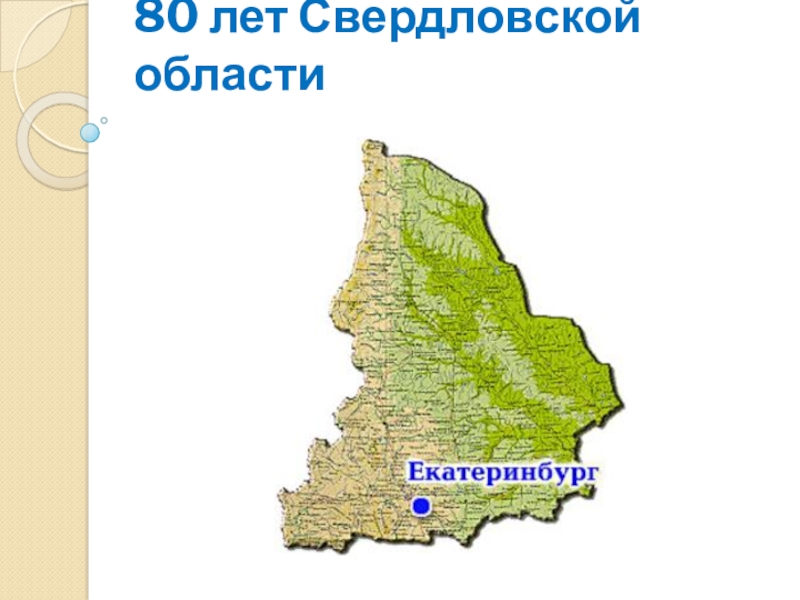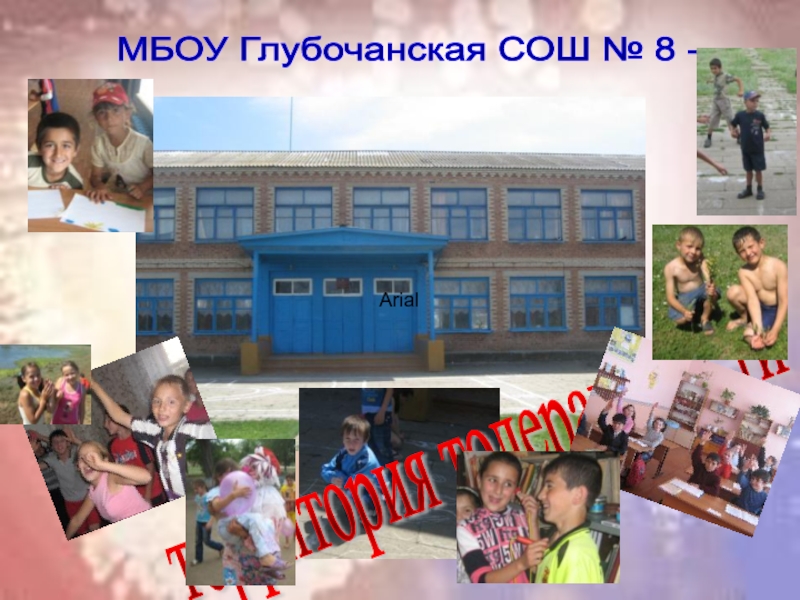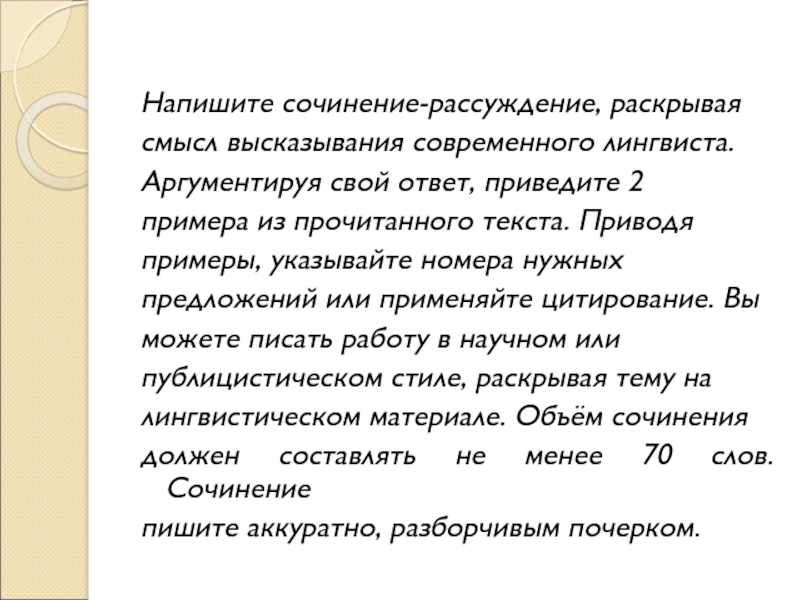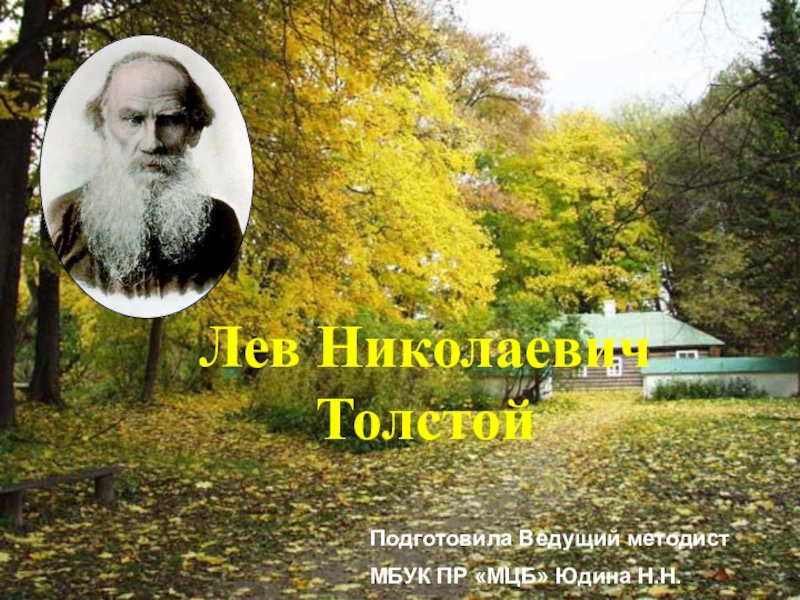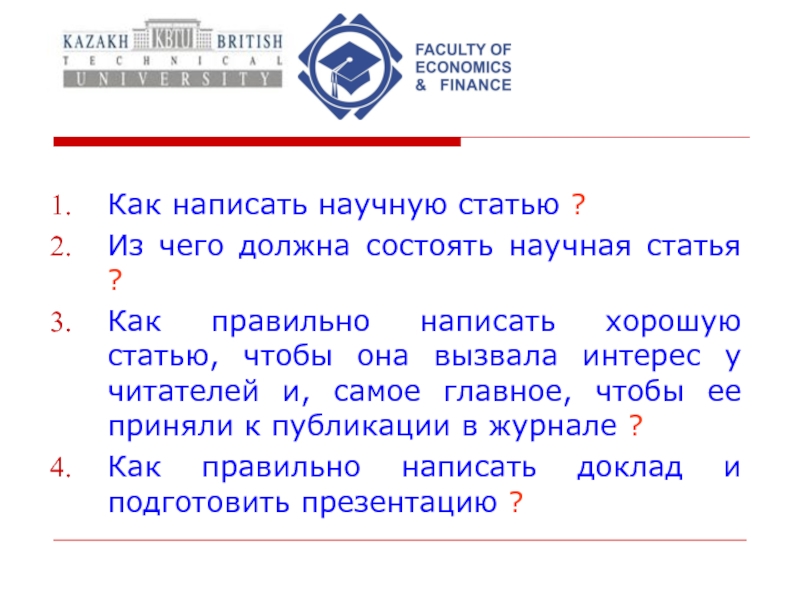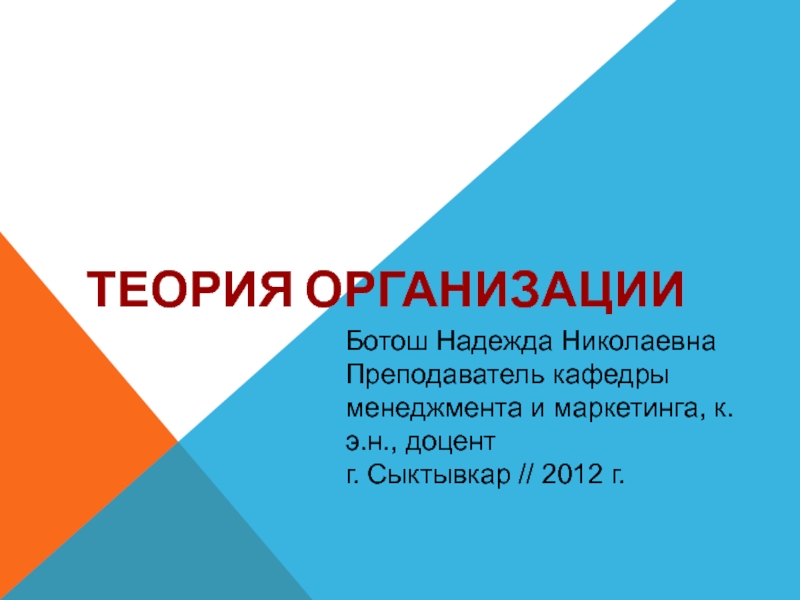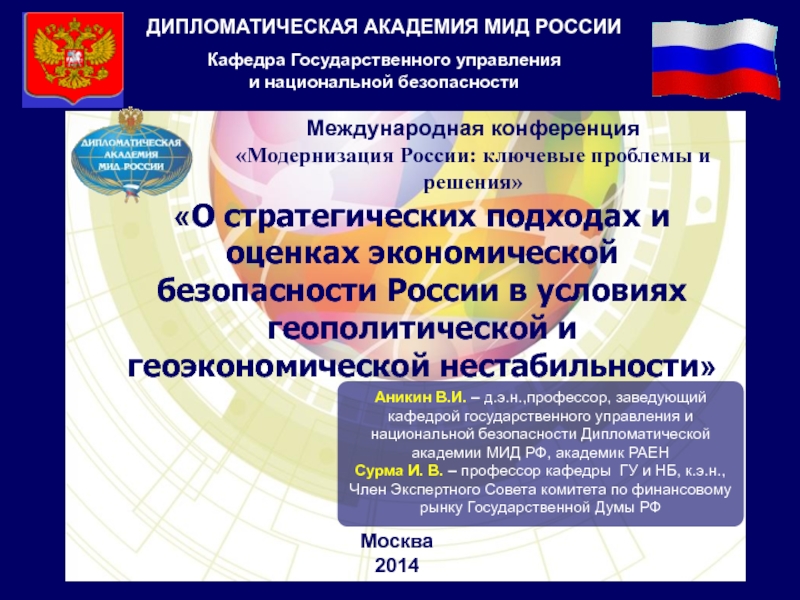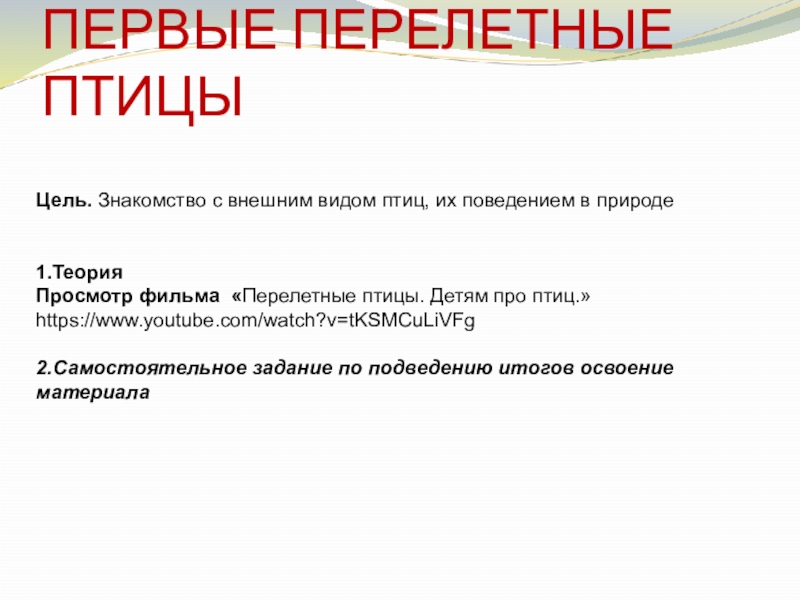Разделы презентаций
- Разное
- Английский язык
- Астрономия
- Алгебра
- Биология
- География
- Геометрия
- Детские презентации
- Информатика
- История
- Литература
- Математика
- Медицина
- Менеджмент
- Музыка
- МХК
- Немецкий язык
- ОБЖ
- Обществознание
- Окружающий мир
- Педагогика
- Русский язык
- Технология
- Физика
- Философия
- Химия
- Шаблоны, картинки для презентаций
- Экология
- Экономика
- Юриспруденция
History of Management
Содержание
- 1. History of Management
- 2. An Ancient Practice of ManagementThe practice of
- 3. An Ancient Practice of ManagementHowever, both management
- 4. Ancient Organizations:1The accomplishments of large ancient organizations
- 5. Ancient Organizations:2There also were large political organizations
- 6. Ancient Organizations: The Roman Empire:1As the
- 7. Ancient Organizations: The Roman Empire:2Conquered lands
- 8. Ancient Organizations: CharacteristicsForms of almost every basic
- 9. Ancient Organizations: CharacteristicsFrequently management was practically a
- 10. Ancient Organizations: Roman Catholic Church There were
- 11. Comparison of Old and Contemporary Organization:1Few large
- 12. Comparison of Old and Contemporary Organization:2Managerial work
- 13. Comparison of Old and Contemporary Organization:3Few people
- 14. Emergence of Systematic Management The first genuine burst
- 15. Emergence of Systematic Management: Why management
- 16. Emergence of Systematic Management: Why management
- 17. Emergence of Systematic Management: Why management
- 18. Emergence of Systematic Management: Why management
- 19. Emergence of Systematic ManagementManagement's emergence as a
- 20. Management's Evolution as a Discipline:1 Management's development as
- 21. Management's Evolution as a Discipline:2 As these fields
- 22. Approaches to Management
- 23. Approaches to Management:1 The schools approach (actually four
- 24. Approaches to Management:2The systems approach stresses that
- 25. Schools approach:1 Four distinct schools of management thought
- 26. Schools approach:2 The strongest adherents of each at
- 27. Scientific Management (1885-1920)Scientific management is most closely
- 28. Scientific Management: Frederick W. Taylor The first phase
- 29. Scientific Management: Gilbreths and Therbligs:1As an
- 30. Scientific Management: Gilbreths and Therbligs:2In the
- 31. Scientific Management: Characteristics:1Scientific management did not ignore
- 32. Scientific Management: Characteristics:2Scientific management also advocated the
- 33. Scientific Management: Main ContributionScientific management was a
- 34. Classical or Administrative Management (1920-1950): Differences from
- 35. Classical or Administrative Management (1920-1950): Differences from
- 36. Classical or Administrative Management (1920-1950): Characteristics Like scientific
- 37. Classical or Administrative Management: the 1-st areaOne
- 38. Classical or Administrative Management: the 2-nd
- 39. Classical or Administrative Management: Fayol's Principles of
- 40. Classical or Administrative Management: Fayol's Principles of
- 41. Classical or Administrative Management: Fayol's Principles of
- 42. Classical or Administrative Management: Fayol's Principles of
- 43. Human Relations (1930-1950) and Behavioral Science (1950-Present)The
- 44. Human Relations (1930-1950) and Behavioral Science (1950-Present)Mayo
- 45. Human Relations (1930-1950) and Behavioral Science (1950-Present)Later
- 46. Management Science or Quantitative Approach (1950-Present)Mathematics, statistics,
- 47. Contributions of the Schools of Management: Scientific
- 48. Contributions of the Schools of Management: Classical
- 49. Contributions of the Schools of Management: Human
- 50. Contributions of the Schools of Management: Management
- 51. The process approachThis major conceptual breakthrough is
- 52. The process approachManagement is considered a process
- 53. Planning The planning function involves deciding what the
- 54. OrganizingOrganizing is the creation of structure. There
- 55. MotivatingThe manager must always keep in mind
- 56. ControllingAlmost everything the manager does involves an
- 57. The Linking Processes The four management
- 58. The system approachThe application of systems theory
- 59. The system approach: Open and Closed
- 60. The system approach: Open and Closed
- 61. The system approach: Open and Closed
- 62. The system approach: Open and Closed Systems
- 63. The contingency approachThe contingency approach tries to
- 64. The contingency approach1. The manager must become
- 65. The contingency approach2. Every management concept and technique
- 66. The contingency approach3. The manager needs to be
- 67. SUMMARY1. The practice of management is as old
- 68. SUMMARY2. Scientific management focused on redesigning tasks to
- 69. SUMMARY3. The management science school uses quantitative techniques
- 70. SUMMARY4. The concept of a management process applicable
- 71. SUMMARY5. The systems approach views the organization as
- 72. SUMMARY6. The contingency approach extended the practical application
- 73. Скачать презентанцию
Слайды и текст этой презентации
Слайд 3An Ancient Practice of Management
However, both management and organizations of
antiquity were quite different from nowadays. Although management is old,
the idea of management as a discipline, profession, and field of scholarship is relatively new. Management did not become a recognized field until the twentieth century. First, let us briefly trace the history of organizations and their management to show what they were like in times past.Слайд 4Ancient Organizations:1
The accomplishments of large ancient organizations clearly indicate that
they were managed formally and had levels of management. The
Hanging Gardens of Babylon, the Inca city of Machu Picchu, and the pyramids of Egypt could have been built only through coordinated organized endeavor.Слайд 5Ancient Organizations:2
There also were large political organizations long before the
birth of Christ. Those of the Macedonians under Alexander the
Great, the Persians, and later the Romans stretched from Asia to Europe. Kings and generals are managers, of course. So were the lieutenants, keepers of graineries, slave drivers, territorial governors, and keepers of the treasury who helped keep these early organizations operating.Слайд 6Ancient Organizations:
The Roman Empire:1
As the years passed, management in
some organizations became even more distinct and sophisticated, and the
organizations themselves grew more powerful and enduring. The Roman Empire, which lasted hundreds of years, is a good example. The legions of Rome, with their well-defined structure of generals and officers, troop divisions, discipline, and planning, marched roughshod over the poorly organized peoples of Europe and the Middle East.Слайд 7Ancient Organizations:
The Roman Empire:2
Conquered lands were administered by governors
responsible to Rome, and roads were built to speed communication
with Rome. Communication, as we shall learn, is essential for organizational success. The famous roads, some of which are still in use, helped get taxes and tribute to the emperor. Perhaps more important, the roads enabled home legions to reach outlying provinces quickly, if either the natives or local administrators rebelled against Roman rule.Слайд 8Ancient Organizations: Characteristics
Forms of almost every basic activity of contemporary
management practice can be found in these large, successful organizations
of antiquity, but, in general, the pattern of management then was different from that of today. For example, the ratio of managers to nonmanagers was much smaller, and there were few middle managers. Early organizations tended to have a small core of top managers who made almost every significant decision themselves.Слайд 9Ancient Organizations: Characteristics
Frequently management was practically a one-man show. If
the top man (and it almost always was a man)
was an effective leader and administrator like Julius Caesar things went fairly smoothly. When an ineffective leader like Nero took charge, life could become uncertain.Слайд 10Ancient Organizations:
Roman Catholic Church
There were instances of organizations being
managed much as they are today. A notable example is
the Roman Catholic Church. The simple structure— pope, cardinal, archbishop, bishop, parish priest—chosen by the Church's founders and still used today is more "modern" than structures of many organizations begun this year. This may be one reason why the Catholic Church has prospered for centuries, while nations and businesses have come and gone. Contemporary military organizations, too, are strikingly similar in many respects to those of ancient Rome.Слайд 11Comparison of Old and Contemporary Organization:1
Few large organizations, no giant
business
Many extremely large, powerful organizations, both business and nonprofit
Relatively few managers, almost no middle managers
Many managers, large middle-management group
OLD
NEW
Слайд 12Comparison of Old and Contemporary Organization:2
Managerial work often not clearly
distinguished and separated from nonmanagerial activities
Well-defined managerial group; managerial
work clearly recognized and separated from nonmanagerial activities Succession to top management based primarily on birth or violence
Succession to top management based primarily on competence with orderly transition
OLD
NEW
Слайд 13Comparison of Old and Contemporary Organization:3
Few people able to make
important organizational decisions
Many people able to make important organizational
decisionsEmphasis on command and intuition
Emphasis on teamwork and rationality
OLD
NEW
Слайд 14Emergence of Systematic Management
The first genuine burst of interest in
management came in 1911. This, the year in which Frederick
W. Taylor published Principles of Scientific Management, is traditionally considered the starting point of management as a recognized field of scholarly inquiry.Слайд 15Emergence of Systematic Management:
Why management was born in USA:1
But,
of course, the notion that organizations can be systematically managed
to attain objectives more effectively did not really emerge at any specific moment in time. The concept evolved over an extended period ranging from the mid-nineteenth century to the 1920s. The major force that first spurred serious interest in management was the Industrial Revolution, which began in England. But the idea that management could in itself make a major contribution to organizations first arose in America.Слайд 16Emergence of Systematic Management:
Why management was born in USA:2
Several
factors help account for why America was the birthplace of
modern management. Even as late as the early twentieth century, the United States was practically the only place where a person could readily overcome the circumstances of birth through personal competence. Millions of Europeans, anxious to improve their lot in life, immigrated to America during the nineteenth century, creating an enormous pool of hardworking laborers.Слайд 17Emergence of Systematic Management:
Why management was born in USA:3
The
United States, almost from its inception, strongly supported education for
everyone who wanted it. Education created an increasingly large body of people intellectually capable of filling various business roles, including management.Слайд 18Emergence of Systematic Management:
Why management was born in USA:4
The
transcontinental railroads, completed in the late nineteenth century, made America
the largest unified market in the world. Significantly, there was almost no governmental regulation of business at the time. Nonregulation allowed the early successful entrepreneurs to create monopolies. These factors and others made it possible to form big businesses—businesses so large they had to be managed formally.Слайд 19Emergence of Systematic Management
Management's emergence as a discipline, a field
of scholarly inquiry and research, was partly a response to
big business's needs, partly an effort to reap more of the benefits of technology created during the Industrial Revolution, and partly the achievement of a handful of curious individuals with a burning interest in finding the most efficient way of accomplishing a job.Слайд 20Management's Evolution as a Discipline:1
Management's development as a discipline has
not been one series of steps. Rather, there have been
several approaches that often overlapped chronologically. Management deals with both technology and people. Consequently, advances in management theory have always depended on advances in supporting disciplines such as mathematics, engineering, psychology, sociology, and anthropology.Слайд 21Management's Evolution as a Discipline:2
As these fields advanced, management researchers,
theorists, and practitioners became more knowledgeable about the factors affecting
organizational success. This knowledge helped the experts to perceive why certain earlier theories sometimes did not hold up and to develop new approaches to management.Слайд 23Approaches to Management:1
The schools approach (actually four approaches) views management
from four distinct perspectives. These schools are scientific management, administrative,
human relations and behavioral science, and management science or quantitative.The process approach sees management as an ongoing series of interrelated management functions.
Слайд 24Approaches to Management:2
The systems approach stresses that managers should view
an organization as a set of interdependent parts, such as
people, structure, tasks, and technology, that try to attain diverse objectives in a changing environment.The contingency approach stresses that the appropriateness of various management techniques is determined by the situation. Because there are so many factors in both the organization and the environment, there is no single "best" way to manage. The most effective technique in a particular case is the one most appropriate for that situation.
Слайд 25Schools approach:1
Four distinct schools of management thought evolved during the
first half of last century. In chronological order they are:
the scientific management school, the administrative school,
the human relations and behavioral school, the management science (quantitative) school
Слайд 26Schools approach:2
The strongest adherents of each at one time believed
that they had found the key to attaining organizational objectives
most effectively. Later studies and breakdowns in application proved that many of their answers to management problems were at best partially correct in certain limited situations. Yet, each of these schools has made a lasting contribution to the field. Even the most progressive contemporary organization still uses some concepts and techniques originated by these schools.Слайд 27Scientific Management (1885-1920)
Scientific management is most closely associated with the
work of Frederick W. Taylor, Frank and Lillian Gilbreth, and
Henry L. Gantt. These writers of the scientific management school believed that by using observation, measurement, logic, and analysis, many manual tasks could be redesigned to make their execution far more efficient.Слайд 28Scientific Management: Frederick W. Taylor
The first phase of the scientific
management approach was to analyze a job and determine its
basic components. Taylor, for example, painstakingly measured the amount of iron ore and coal a man could lift with shovels of varying size. Taylor discovered, for example, that the maximum amount of iron ore and coal could be moved if every worker used a shovel with a 21-pound capacity. In comparison to the earlier system in which each worker provided his own shovel, the gain in output was phenomenalСлайд 29Scientific Management:
Gilbreths and Therbligs:1
As an apprentice bricklayer, Frank Gilbreth
noticed that the men teaching him to lay bricks used
three different sets of motions. He wondered which of these was most efficient, so he methodically studied them and the tools used. The result was an improved method that reduced the number of motions needed to lay a brick from 18 to 4, increasing productivity by 250 percent.Слайд 30Scientific Management:
Gilbreths and Therbligs:2
In the early 1900s Frank and
his wife Lillian began to study motions using a motion
picture camera in combination with a microchronometer. A microchronometer is a clock Frank invented that could record time intervals as small as 1/2000 of a second. With stop-motion photography the Gilbreths were able to identify 17 different operations in hand motions. They called these therbligs, which is “gilbreth” spelled backward.Слайд 31Scientific Management: Characteristics:1
Scientific management did not ignore the human element.
An important contribution of the school was the systematic use
of financial incentives to motivate people to produce as much as possible. They also allowed for rest and unavoidable delays, so that the amount of time estimated for a job was fair and realistic. This enabled management to set standards of performance that were attainable and give added pay to those who exceeded the minimum. A key element in this school was that people who produced more were rewarded more. Scientific management writers also recognized the importance of selecting people physically and mentally suited to their work, and they emphasized training.Слайд 32Scientific Management: Characteristics:2
Scientific management also advocated the separation of thinking
and planning—managerial work—from the actual performance of tasks. Taylor and
his contemporaries recognized, in effect, that the work of managing is a distinct specialty and the organization as a whole would benefit if each group concentrated on what they did best. This approach contrasted sharply with the old system in which workers planned their work themselves.Слайд 33Scientific Management: Main Contribution
Scientific management was a major conceptual breakthrough.
Largely because of it, management became widely recognized as a
distinct field of scholarly inquiry. For the first time managers and scholars saw that the methods and approaches of science and engineering could be applied effectively to help attain organizational objectives.Слайд 34Classical or Administrative Management (1920-1950): Differences from Scientific Management
Scientific management
writers focused on what is called shop management. They concentrated
on improving efficiency below the managerial level. It was not until the rise of the administrative school that writers systematically approached making the management of the overall organization more effective.Слайд 35Classical or Administrative Management (1920-1950): Differences from Scientific Management
Taylor and
Gilbreth began as common laborers, which doubtless influenced their thinking
about managing organizations. In contrast, the major contributors to administrative management had more direct experience with upper-level management in big business. Henri Fayol, credited with originating the school and sometimes called the father of management, managed a large French coal mining firm.Слайд 36Classical or Administrative Management (1920-1950): Characteristics
Like scientific management, the classical
school writers did not show strong concerns for the social
aspects of managing. The classical school's objective was to identify universal principles of management. The underlying idea was that following these principles would invariably lead to organizational success. These principles covered two major areas.Слайд 37Classical or Administrative Management: the 1-st area
One was the design
of a rational system for administering an organization. By identifying
the major functions of a business, the classical theorists believed they could determine the best way to divide the organization into work units or departments. Traditionally, these business functions are finance, production, and marketing. Closely related to this was the identification of the basic functions of management. Fayol made a major contribution to management by viewing management as a universal process consisting of several related functions such as planning and organizing.Слайд 38Classical or Administrative Management:
the 2-nd area
The second category of
classical principles was concerned with structuring organizations and managing employees.
An example is the principle of unity of command, which holds that a person should receive orders from only one superior and answer only to that superior.Слайд 39Classical or Administrative Management: Fayol's Principles of Management:1
1. Division of
work. Specialization belongs to the natural order of things. The
object of division of work is to produce more and better work with the same effort. It is accomplished through reduction in the number of objects to which attention and effort must be directed.2. Authority and responsibility. Authority is the right to give orders and responsibility is its essential counterpart. Wherever authority is exercised responsibility arises.
3. Discipline. Discipline implies obedience and respect for the agreements between the firm and its employees.
Слайд 40Classical or Administrative Management: Fayol's Principles of Management:2
4. Unity
of command. An employee should receive orders from one superior
only.5. Unity of direction. Each group of activities having one objective should be unified by having one plan and one head.
6. Subordination of indiuidual interest to general interest. The interest of one employee or group of employees should not prevail over that of company or broader organization.
7. Remuneration of personnel. To maintain the loyalty and support of workers, they must receive a fair wage for services rendered.
Слайд 41Classical or Administrative Management: Fayol's Principles of Management:3
8. Centralization. Like
division of work, centralization belongs to the natural order of
things. However, the appropriate degree of centralization will vary with a particular concern, so it becomes a question of the proper proportion.9. Scalar chain. The scalar chain is the chain of superiors ranging from the ultimate authority to the lowest ranks.
10. Order. A place for everything and everything in its place.
Слайд 42Classical or Administrative Management: Fayol's Principles of Management:4
11. Equity. Equity
is a combination of kindliness and justice.
12. Stability of tenure
of personnel. High turn over increases inefficiency.13. Initiative. Initiative involves thinking out a plan and ensuring its success. This gives zeal and energy to an organization.
14. Esprit de corps. Union is strength, and it comes from the harmony of personnel.
Слайд 43Human Relations (1930-1950) and Behavioral Science (1950-Present)
The scientific management and
classical schools developed when the science of psychology was in
its infancy. Moreover, since persons interested in psychology were rarely interested in management, the scant existing knowledge of the human mind was not related to the problems of work. Consequently, although scientific and classical writers recognized the importance of people, they limited their discussion to such factors as fair pay, economic incentives, and establishing formal relationships.Слайд 44Human Relations (1930-1950) and Behavioral Science (1950-Present)
Mayo found that an
efficiently designed job and adequate pay would not always lead
to improved productivity, as the scientific management school believed. Forces arising from interaction between people could and often did override managerial efforts. People sometimes responded more strongly to pressure from others in the work group than to management's desires and incentives.Слайд 45Human Relations (1930-1950) and Behavioral Science (1950-Present)
Later research conducted by
Abraham Maslow and other behavioral scientists (also described later) helped
explain why. Human beings, Maslow proposed, are primarily motivated not by economic forces, as the scientific management writers believed, but by various needs that money only partially and indirectly fulfills.Based on these findings, writers of the human relations school believed that if management showed more concern for their employees, employee satisfaction should increase, which would lead to an increase in productivity.
Слайд 46Management Science or Quantitative Approach (1950-Present)
Mathematics, statistics, engineering, and related
fields have contributed significantly to management thought. Basically, operations research
is the application of scientific research methods to operational problems of organizations. After the problem is identified, the operations research group develops a model of the situation. A model is a representation of reality. Usually, the model simplifies reality or represents it abstractly. Models make it easier to comprehend the complexities of reality.A key characteristic of the management science school is this substitution of models, symbols, and quantification for verbal and descriptive analysis
Слайд 47Contributions of the Schools of Management:
Scientific Management School
1. Application
of scientific analysis to determine the best way of performing
a task2. Selection of workers best suited to the task and provision for training them
3. Providing workers with the resources required to perform their tasks efficiently
4. Systematic, fair use of pay incentives to improve productivity
5. Separation of planning and thinking from the actual work
Слайд 48Contributions of the Schools of Management:
Classical Management School
1. Development
of principles of management
2. Description of the functions of
management 3. Systematic approach to management of overall organization
Слайд 49Contributions of the Schools of Management: Human Relations and Behavioral Science
Schools
1. Application of human relations techniques to increase satisfaction
and productivity 2. Application of behavioral science to management and the design of organizations so that each employee is used to full potential
Слайд 50Contributions of the Schools of Management:
Management Science School
1. Improved
understanding of complex management problems through development and application of
models2. Development of quantitative techniques to help managers make decisions in complex situations
Слайд 51The process approach
This major conceptual breakthrough is widely accepted today.
The process approach was first suggested by writers of the
administrative management school, who attempted to describe the functions of the manager. However, administrative writers tended to consider these functions to be independent of one another. The process approach, in contrast, considers management functions to be interrelated.Слайд 52The process approach
Management is considered a process because the work
of attaining objectives through others is not a one-time act
but an ongoing series of interrelated activities. These activities, each a process by itself, are essential to organizational success, and are referred to as the management functions. Each managerial function is also a process because each consists of a series of interrelated activities.We consider the management process to consist of the functions of planning, organizing, motivating, and controlling. These four primary functions are interrelated through the linking processes of communicating and decision making.
Слайд 53Planning
The planning function involves deciding what the organization's objectives should
be and what its members should do to attain them.
Basically, the planning function addresses three fundamental questions:1. Where are we now? Managers must assess the organization's strengths and weaknesses in important areas such as finance, marketing, production, research and development, and human resources.
2. Where do we want to go? By assessing the opportunities and threats in the organization's environment, such as competitors, customers, laws, political factors, economic conditions, technology, suppliers, and social and cultural changes, management decides what the organization's objectives should be and what could hinder the organization in attaining objectives.
3. How are we going to get there? Managers need to decide both generally and specifically what the organization's members must do to attain objectives.
Слайд 54Organizing
Organizing is the creation of structure. There are many elements
that must be structured for the organization to carry out
plans and thereby attain its objectives.Слайд 55Motivating
The manager must always keep in mind that the best-formulated
plans and finest organizational structures have no value whatsoever unless
somebody actually performs the work of the organization. The role of the motivating function is to get members of the organization to perform their delegated duties according to plan.From the late eighteenth century to the twentieth it was widely believed that people would always work harder if given an opportunity to earn more. We now realize that to motivate effectively a manager must determine what the needs of workers actually are and provide a way for workers to satisfy them through performance.
Слайд 56Controlling
Almost everything the manager does involves an event in the
future. Controlling is the process of ensuring that the organization
is actually attaining its objectives.Слайд 57The Linking Processes
The four management functions of planning,
organizing, motivating, and controlling have two elements in common: All
require making decisions and all require communication, both to obtain information for making a good decision and to get that decision understood by others in the organization. Because of this bond and because they connect and interrelate the four functions, communication and decision making are often referred to as the linking processes.Слайд 58The system approach
The application of systems theory to management has
made it easier for managers to see the organization as
an entity of interrelated parts that is inextricably intertwined with the outside world. It also has helped to integrate the contributions of the schools that dominated early management thought.A system is an entity composed of interdependent parts each of which contributes to the characteristics of the whole
Слайд 59The system approach:
Open and Closed Systems
There are two major
types of systems, closed and open. A closed system has
firm, fixed boundaries; its operation is relatively independent of the environment outside the system. A watch is a familiar example of a closed system. The interdependent parts of a watch move continuously and precisely once the watch is wound or a battery is inserted. As long as the watch has sufficient energy stored within it, its system is independent of the external environment.Слайд 60The system approach:
Open and Closed Systems
An open system is
characterized by interaction with the external environment. Energy, information, and
material are exchanged with the environment through the system's permeable boundaries. The system is not self-sufficient but dependent on energy, information, and materials from outside. In addition, the open system has the capacity to adapt to changes in the external environment and must do so to continue operating.Слайд 61The system approach:
Open and Closed Systems
Managers are concerned primarily
with open systems because all organizations are open systems. All
organizations are dependent on the world outside themselves for survival. Even a monastery needs to bring in people and supplies and to maintain contact with its parent church in order to operate over the long term. Early schools approaches to management failed to hold up in all situations because they assumed, at least implicitly, that organizations are closed systems.Слайд 63The contingency approach
The contingency approach tries to match specific techniques
or concepts of managing to the specific situation at hand
in order to attain organizational objectives most effectively.The contingency approach focuses on situational differences both between and within organizations. It tries to determine what the significant variables of the situation are and how they influence organizational effectiveness. The methodology of the contingency approach can be expressed as a four-step process.
Слайд 64The contingency approach
1. The manager must become familiar with the
tools of the management profession that have proven effective. These
include understanding the management process, individual and group behavior, systems analysis, techniques for planning and control, and quantitative decision-making techniques.Слайд 65The contingency approach
2. Every management concept and technique has both advantages
and disadvantages, or trade-offs, when applied to a specific situation.
The manager must be able to predict the probable consequences, both good and bad, of applying a given technique or concept. To give a simple example, offering to double the salary of all employees in exchange for added work would probably increase their motivation considerably, at least temporarily. Traded off against this are the added costs, which may cause the organization to go broke.Слайд 66The contingency approach
3. The manager needs to be able to interpret
the situation properly. It must be determined correctly which factors
are most important in a given situation and what effect changing one or more of these variables would probably have.4. The manager must be able to match the specific techniques with the fewest potential drawbacks to the specific situation, thereby attaining organizational objectives in the most effective way under the existing circumstances.
